NDT PROFICIENCY ASSESSMENT
Introduction
The NDT Assessment is carried out to ensure the competence and expertise of NDE operators in carrying out their responsibilities effectively and safely.
Emphasize the importance of NDE in ensuring the integrity and reliability of critical structures and components.
NDE plays a critical role in safeguarding the integrity and reliability of various structures and components, ranging from industrial machinery to critical infrastructure and aerospace components. The primary objective of NDE is to detect flaws, defects, and irregularities without causing any damage to the inspected materials or assets.
Today, we will delve into the responsibilities of NDE operators and the vital role they play in maintaining the safety and efficiency of our operations. We will also explore the significance of proficiency assessments in assuring the reliability of inspection results and adherence to industry standards and regulations.
Our commitment to safety and quality drives us to continuously improve our practices, and NDE operators are at the forefront of this mission. By evaluating and enhancing their proficiency, we can further bolster the trust our clients and stakeholders place in us.
Throughout this presentation, we will discuss the assessment process, which includes a written examination, a practical demonstration, and a thorough performance evaluation. We believe that this comprehensive approach will not only help us identify areas for improvement but also provide our operators with valuable feedback to refine their skills.

What is NDE?
NDE stands for Non-Destructive Evaluation, also known as Non-Destructive Testing (NDT). It refers to a set of techniques and methods used to inspect, test, or evaluate the integrity and quality of materials, components, or structures without causing any damage to the tested object. NDE is widely employed in various industries to ensure the safety, reliability, and performance of critical assets.
The main objective of NDE is to detect defects, flaws, cracks, or irregularities that could compromise the functionality or structural integrity of the inspected item. By identifying such issues early on, necessary maintenance or repairs can be performed, minimizing the risk of catastrophic failures and ensuring the longevity of the asset.
NDE methods employ various physical principles and technologies to gather information about the internal or surface condition of the material being inspected. Some basic NDE techniques include:
Ultrasonic Testing (UT): Uses high-frequency sound waves to detect internal flaws and measure material thickness.
Radiographic Testing (RT): Utilizes X-rays or gamma rays to examine the internal structure of components and detect defects.
Magnetic Particle Testing (MPT): Inspects ferromagnetic materials for surface cracks and defects using magnetic fields.
Liquid Penetrant Testing (PT): Identifies surface-breaking defects in non-porous materials by applying a liquid penetrant and developer.
Eddy Current Testing (ECT): Detects surface and near-surface flaws in conductive materials by inducing electrical currents.
Visual Inspection (VT): Involves direct visual examination of components to detect surface defects and irregularities.
Each NDE method has its strengths and limitations, making it essential for NDE operators to be proficient in selecting and applying the appropriate technique based on the specific requirements of the inspection.
NDE plays a crucial role in industries such as aerospace, automotive, manufacturing, oil and gas, power generation, and construction. It is a fundamental tool for quality assurance, safety assessment, and preventive maintenance, contributing to the overall reliability and efficiency of industrial processes and infrastructure.
Responsibilities of NDE Operators
NDE operators play a vital role in ensuring the integrity, safety, and quality of materials, components, and structures through non-destructive evaluation techniques. Their responsibilities are crucial to the success of inspections and the reliability of inspection results. Here are the key responsibilities of NDE operators:

Equipment Setup and Calibration:
Properly setting up and calibrating NDE equipment before inspections to ensure accurate and reliable results.
Ensuring that all equipment is in good working condition and meets the required standards and specifications.
Inspection Execution:
Performing non-destructive evaluations according to established procedures and industry standards.
Following safety protocols and guidelines during inspections to protect themselves, colleagues, and the surrounding environment.
Applying the appropriate NDE method (e.g., ultrasonic testing, radiographic testing, magnetic particle testing) based on the inspection requirements and material properties.
Data Collection and Interpretation:
Accurately recording inspection data, including test results, equipment settings, and any observed anomalies or defects.
Interpreting the inspection results to identify and assess flaws, defects, or irregularities in the inspected material or component.
Reporting and Documentation:
Preparing clear and comprehensive inspection reports that detail the findings, including the location, size, and severity of any identified defects.
Maintaining accurate records of inspection data, reports, and other relevant documentation for future reference and analysis.
Adherence to Codes and Standards:
Complying with industry codes, standards, and specifications relevant to the specific inspection task.
Staying up-to-date with the latest developments in NDE technology and industry best practices.
Safety and Quality Assurance:
Prioritizing safety and implementing safety measures to prevent accidents or incidents during inspections.
Ensuring the quality and reliability of inspection results by performing inspections with precision and diligence.
Continuous Learning and Development:
Engaging in ongoing training and professional development to improve skills, knowledge, and proficiency in NDE methods.
Participating in workshops, seminars, and certifications to stay current with emerging technologies and best practices.
Client Communication:
Effectively communicating inspection findings to clients, engineers, or other stakeholders.
Addressing client concerns and providing technical explanations when necessary.
Collaboration:
Working collaboratively with other team members, such as engineers, technicians, and supervisors, to plan and execute inspections effectively.
The responsibilities of NDE operators are critical to the success of NDE programs, ensuring the reliability and safety of structures, components, and materials across various industries. Their expertise and attention to detail contribute significantly to the overall quality assurance and risk mitigation efforts.
Importance of Proficiency Assessment
Proficiency assessment plays a pivotal role in various fields, including Non-Destructive Evaluation (NDE). It is a systematic process designed to evaluate the competence, skills, and knowledge of individuals performing critical tasks.
The importance of proficiency assessment for NDE operators cannot be overstated, and here are some key reasons why it is crucial:
- Reliability of Inspection Results: Proficient NDE operators can consistently produce accurate and reliable inspection results. Proficiency assessments ensure that operators have the necessary skills and expertise to identify defects, flaws, or irregularities in materials and components correctly. This accuracy is essential for making informed decisions about the safety and integrity of assets.
- Risk Mitigation: NDE is often utilized to identify potential safety hazards and prevent catastrophic failures in critical systems and infrastructure. Proficiency assessments help mitigate risks by ensuring that NDE operators can effectively identify and assess defects that may compromise the reliability of assets.
- Adherence to Standards and Regulations: Industries have specific codes, standards, and regulations that govern NDE practices. Proficiency assessments help verify that operators are well-versed in these requirements, ensuring inspections are conducted in compliance with industry norms and legal obligations.
- Continuous Improvement: Proficiency assessments provide valuable feedback to NDE operators, highlighting areas where improvement is needed. This feedback encourages operators to pursue additional training and development opportunities, promoting continuous improvement in their skills and knowledge.
- Client Confidence: Clients and stakeholders rely on NDE results to make critical decisions about asset maintenance, repair, and replacement. Proficiency assessments instill confidence in clients that the NDE operators conducting the inspections are competent and capable of providing reliable data.
- Safety Enhancement: NDE operators work with potentially hazardous materials and in challenging environments. Proficiency assessments emphasize safety protocols, ensuring that operators are well-trained in handling equipment and maintaining a safe work environment.
- Quality Assurance: Proficient NDE operators contribute to the overall quality assurance efforts of an organization. They are more likely to detect and report defects accurately, leading to better-informed decisions on asset management.
- Standardization of Practices: Proficiency assessments promote standardization in NDE practices. When all operators meet a predefined level of expertise, it ensures consistency and uniformity in inspection procedures and results.
- Professional Credibility: Demonstrating proficiency through assessments enhances the professional credibility of NDE operators. This recognition can lead to increased career opportunities and advancements in the field.
- Industry Reputation: Industries that prioritize proficiency assessments for NDE operators project a commitment to safety and quality. This contributes to a positive reputation within the industry and among clients and stakeholders.
In conclusion, proficiency assessment for NDE operators is fundamental to maintaining the highest standards of safety, reliability, and expertise. By ensuring operators’ competence, organizations can enhance the effectiveness of NDE practices and maintain a strong position in their respective industries.
Proficiency Assessment Process
The proficiency assessment process for Non-Destructive Evaluation (NDE) operators is a comprehensive approach designed to evaluate their competence, skills, and knowledge in conducting inspections. It typically involves several stages to ensure that operators meet the required standards and can perform their duties effectively.

Below is a general outline of the proficiency assessment process:
- Preparation and Planning:
- Identify the NDE methods to be assessed based on the operator’s job responsibilities and industry requirements.
- Define the assessment criteria, which may include written examination, practical demonstration, and performance evaluation.
- Establish the assessment schedule, location, and resources required for conducting the assessments.
- Written Examination:
- Administer a written examination to assess the theoretical knowledge of NDE operators.
- The examination may include multiple-choice questions, true/false questions, or short-answer questions.
- Evaluate the operator’s understanding of NDE principles, inspection procedures, equipment usage, and relevant codes and standards.
- Practical Demonstration:
- Conduct a hands-on practical assessment where the operator demonstrates their skills in performing NDE inspections.
- Provide the operator with sample components or mock scenarios representative of real-world inspection tasks.
- Evaluate the operator’s ability to set up NDE equipment correctly, execute inspections accurately, and interpret inspection results proficiently.
- Performance Evaluation:
- Review the operator’s previous inspection records and reports to assess their adherence to industry standards and safety protocols.
- Evaluate the operator’s overall performance, attention to detail, and accuracy in identifying defects or irregularities during previous inspections.
- Feedback and Review:
- Provide constructive feedback to the operator based on the assessment results.
- Address areas where improvement is needed and suggest additional training or development opportunities.
- Encourage the operator to seek continuous learning and professional development to enhance their skills.
- Decision and Certification:
- Based on the assessment results, determine the operator’s proficiency level.
- Certify operators who meet the required proficiency standards, indicating their competence to perform NDE inspections independently.
- If an operator does not meet the proficiency standards, provide guidance and support to help them improve their skills and knowledge.
- Ongoing Proficiency Maintenance:
- Implement a plan for ongoing proficiency assessment and maintenance to ensure that operators continue to meet industry standards.
- Regularly review and update the assessment process to reflect changes in technology, codes, and best practices.
- Documentation:
- Maintain thorough records of the proficiency assessment process, including examination results, practical demonstration evaluations, and certification status.
- Keep all documentation secure to provide evidence of the operator’s competence and compliance with industry requirements.
The proficiency assessment process is a dynamic and continuous effort aimed at ensuring the competency and expertise of NDE operators, contributing to the overall safety and reliability of inspections within an organization or industry.
Written Examination
The Written Examination for Non-Destructive Evaluation (NDE) Operators is a test designed to assess the knowledge and understanding of individuals who are involved in conducting Non-Destructive Evaluation techniques. NDE is a critical field used in various industries, such as aerospace, manufacturing, construction, and engineering, to assess the integrity of materials and components without causing damage to them.
This written examination typically covers a range of topics related to NDE principles, techniques, equipment, safety practices, codes, and standards. It aims to evaluate the operator’s proficiency in identifying and interpreting defects or discontinuities within materials and components using NDE methods.
The assessment may include multiple-choice questions, true/false questions, or short-answer questions, depending on the complexity and depth of knowledge required for the examination. Successful performance in this examination indicates that the NDE operator possesses the necessary theoretical knowledge and understanding of NDE principles, allowing them to make informed decisions during inspections and ensure the reliability and safety of the materials or components being tested.
It is essential for NDE operators to maintain a high level of proficiency and stay up-to-date with the latest advancements and best practices in the field to ensure accurate and reliable evaluations. Regular proficiency assessments, like the written examination, contribute to maintaining the quality and integrity of Non-Destructive Evaluation processes and results.
Practical Demonstration
The Practical Demonstration for Non-Destructive Evaluation (NDE) Operators is a hands-on evaluation designed to assess the practical skills and abilities of individuals involved in conducting NDE inspections. Unlike the written examination, which tests theoretical knowledge, the practical demonstration focuses on the operator’s application of NDE techniques and their ability to perform inspections accurately and effectively in real-world scenarios.
During the practical demonstration, the NDE operator is typically presented with various test specimens or components containing known defects or discontinuities. The operator is then required to apply the appropriate NDE method(s) to detect, locate, and evaluate these flaws following established procedures and guidelines.
The assessment may involve the use of different NDE techniques, such as Ultrasonic Testing (UT), Radiography (RT), Eddy Current Testing (ECT), Magnetic Particle Testing (MT), Liquid Penetrant Testing (PT), or Visual Inspection (VT), depending on the specific industry and application.
The goals of the Practical Demonstration of Proficiency Assessment for NDE Operators include:
- Hands-on Skill Evaluation: Assessing the operator’s ability to set up and calibrate NDE equipment, perform inspections correctly, and accurately interpret the test results.
- Defect Recognition: Evaluating the operator’s proficiency in identifying and characterizing defects or discontinuities in the test specimens.
- Adherence to Procedures: Verifying that the operator follows established procedures, safety protocols, and codes or standards relevant to the NDE method being used.
- Data Reporting: Ensuring that the operator can effectively document the inspection results, including the location, size, and nature of detected defects.
- Problem-Solving: Assessing the operator’s ability to troubleshoot and adapt their approach when faced with challenging inspection scenarios.

The Practical Demonstration complements the written examination and provides a more comprehensive evaluation of an NDE operator’s overall competency and readiness to perform inspections in real-world situations. Successful performance in both the written examination and the practical demonstration confirms that the NDE operator possesses the necessary knowledge, skills, and expertise to carry out NDE inspections effectively, contributing to the safety, quality, and reliability of materials and components in various industries.
Basic requirements in the Proficiency Assessment of Non-Destructive Evaluation (NDE) Operators
Proficiency assessment for NDE operators is a vital process to evaluate the knowledge, skills, and abilities of individuals involved in non-destructive testing. It typically includes a combination of written examinations and practical demonstrations. The assessment ensures that NDE operators meet required standards, adhere to safety protocols, and possess the expertise to perform accurate inspections. By identifying areas for improvement and providing targeted training, the assessment contributes to enhanced inspection quality, improved safety, and client confidence. Regular proficiency assessments foster a culture of continuous improvement, ensuring NDE operators remain competent and up-to-date with the latest advancements and industry best practices. Overall, proficiency assessments are crucial for maintaining the integrity and reliability of NDE inspections across various industries.
The Proficiency Assessment of Non-Destructive Evaluation (NDE) Operators should include the following basic requirements to ensure a comprehensive evaluation of the operators’ knowledge, skills, and practical abilities:
- Written Examination: A written examination should cover fundamental NDE principles, techniques, equipment, terminology, safety procedures, and industry codes and standards.
- Practical Demonstration: A practical demonstration should allow operators to perform hands-on inspections using various NDE methods on test specimens with known defects. This assesses their ability to set up equipment, interpret results, and accurately detect and characterize flaws.
- Defect Recognition: The assessment should evaluate operators’ proficiency in identifying and evaluating different types of defects, such as cracks, voids, inclusions, and discontinuities.
- Equipment Operation: Operators should demonstrate their competence in operating NDE equipment correctly and effectively.
- Safety Compliance: The assessment should include safety-related questions to ensure operators understand and follow safety protocols during inspections.
- Codes and Standards: Operators should demonstrate knowledge of relevant industry codes and standards applicable to NDE inspections.
- Documentation and Reporting: The assessment should assess operators’ ability to document inspection results accurately and prepare clear and concise inspection reports.
- Problem-Solving Skills: Operators should demonstrate their ability to troubleshoot and adapt their approach when faced with challenging inspection scenarios.
- Knowledge of NDE Techniques: The assessment should cover various NDE techniques, The Operators must aware on principles, applications, equipment setup, defect recognition, and interpretation of results.
- Industry-Specific Knowledge: Depending on the industry, the assessment may include questions specific to the materials and components commonly inspected within that sector.
- Defect Sizing and Characterization: The assessment should evaluate the operator’s ability to estimate defect sizes and determine the significance of detected flaws.
- Interpretation of Results: Operators should demonstrate their ability to interpret inspection results accurately and make informed decisions based on the findings.
- Continued Professional Development: The assessment should encourage operators to pursue continuous professional development and stay updated with the latest advancements in NDE techniques and practices.
By including these basic requirements in the proficiency assessment, organizations can ensure that NDE operators are qualified, skilled, and capable of performing reliable inspections, contributing to the overall safety, quality, and integrity of materials and components in various industries.
These sections cover a broad range of NDE principles and techniques, and they can be adapted and expanded based on the specific needs and requirements of the proficiency assessment. The assessment should be designed to thoroughly evaluate the proficiency of NDE operators and ensure that they meet the required standards to perform inspections accurately and safely.
Performance Evaluation
The Performance Evaluation of a Non-Destructive Evaluation (NDE) Operators is a comprehensive assessment that combines both theoretical knowledge and practical skills to evaluate an NDE operator’s overall proficiency in performing NDE inspections. It encompasses various components, including a written examination, a practical demonstration, and often a review of the operator’s work history and experience.
- Written Examination: The written examination tests the NDE operator’s theoretical knowledge and understanding of NDE principles, techniques, equipment, safety practices, codes, and standards. It may include multiple-choice questions, true/false questions, and short-answer questions.
- Practical Demonstration: The practical demonstration assesses the NDE operator’s hands-on skills and abilities in conducting NDE inspections. The operator is presented with test specimens or components containing known defects, and they must apply the appropriate NDE method(s) to detect, locate, and evaluate these flaws accurately.
- Work History and Experience: The operator’s work history and experience are often taken into consideration as part of the performance evaluation. This includes the number of years of experience in the NDE field, the types of inspections performed, the industries worked in, and any relevant certifications or qualifications.
- Defect Recognition and Evaluation: During the practical demonstration, the operator’s proficiency in defect recognition and characterization is assessed. They must accurately identify and evaluate defects or discontinuities in the test specimens and provide detailed reports on their findings.
- Adherence to Procedures and Safety: The operator’s ability to follow established procedures, safety protocols, and relevant codes or standards is evaluated to ensure that inspections are conducted with precision and safety.
- Data Reporting and Documentation: The operator’s proficiency in documenting the inspection results, including defect location, size, and nature, is reviewed to determine their ability to provide clear and concise reports.
- Problem-Solving and Adaptability: The operator’s problem-solving skills and adaptability to challenging inspection scenarios are assessed to gauge their ability to handle real-world NDE situations effectively.
- Overall Performance: The performance evaluation takes into account the operator’s performance in both the written examination and the practical demonstration, as well as their work history and experience. A comprehensive assessment of these factors determines the overall proficiency level of the NDE operator.
A successful performance evaluation indicates that the NDE operator possesses the necessary knowledge, skills, and experience to conduct NDE inspections competently and reliably. It is crucial to ensure the quality, safety, and integrity of materials and components in various industries that rely on NDE techniques for non-destructive testing.
Benefits of Proficiency Assessment
The proficiency assessment of Non-Destructive Evaluation (NDE) operators offers several significant benefits to individuals, organizations, and industries that rely on NDE techniques for non-destructive testing. These assessments are designed to evaluate the knowledge, skills, and abilities of NDE operators, ensuring that they meet the required standards and can perform their roles effectively. Here are some key benefits of conducting proficiency assessments for NDE operators:
- Quality Assurance: Proficiency assessments help ensure the quality and accuracy of NDE inspections. By evaluating operators’ knowledge and practical skills, organizations can maintain consistent and reliable inspection results, minimizing the risk of undetected defects or inaccuracies.
- Safety Enhancement: NDE operators work with potentially hazardous materials, radiation, or high-energy equipment. Proficiency assessments include safety evaluations, ensuring that operators understand and follow safety protocols, and reducing the risk of accidents and injuries.
- Compliance with Standards: Many industries have specific codes, regulations, and standards related to NDE practices. Proficiency assessments verify that operators are familiar with and adhere to these requirements, ensuring compliance and maintaining industry best practices.
- Risk Mitigation: Effective NDE inspections play a crucial role in identifying defects or weaknesses in materials and components. Proficiency assessments help ensure that NDE operators can accurately detect potential hazards, reducing the risk of failures and ensuring the safety of critical structures and assets.
- Increased Reliability of Inspections: Skilled and knowledgeable NDE operators can identify and characterize defects more accurately, leading to more reliable and actionable inspection results. This enhances decision-making and reduces the need for re-inspections.
- Professional Development: Proficiency assessments offer an opportunity for NDE operators to identify their strengths and areas for improvement. They can use this feedback to focus on professional development and enhance their skills over time.
- Client Confidence: Organizations that employ proficient NDE operators can instill confidence in their clients or customers. Demonstrating a commitment to high-quality inspections and expertise can lead to increased customer satisfaction and trust.
- Industry Reputation: Maintaining a competent and skilled NDE workforce enhances the reputation of the entire industry. Industries that prioritize proficiency assessments demonstrate a dedication to quality, safety, and professionalism.
- Efficient Resource Utilization: By assessing operator proficiency, organizations can allocate resources more efficiently. Operators who demonstrate high proficiency may be assigned to more complex inspections, while those needing improvement can receive targeted training.
- Continuous Improvement: Proficiency assessments contribute to a culture of continuous improvement within NDE operations. Regularly evaluating operator performance and addressing any knowledge gaps fosters a commitment to ongoing learning and advancement.
Overall, proficiency assessments for NDE operators are crucial for maintaining the integrity of materials and components in various industries. By ensuring that NDE operators are knowledgeable, skilled, and up-to-date with the latest best practices, organizations can achieve higher inspection quality, increased safety, and improved client satisfaction, ultimately contributing to the success and reputation of their business.
Conclusion
After conducting the proficiency assessment of Non-Destructive Evaluation (NDE) operators, several key outcomes and conclusions can be drawn. These conclusions are essential for evaluating the competence of the NDE operators and determining the overall effectiveness of the assessment process. Here are the possible conclusions that may arise:
- Operator Proficiency Levels: The assessment provides insights into the proficiency levels of individual NDE operators. Operators who perform well in both the written examination and practical demonstration demonstrate a high level of knowledge and practical skills, while those with lower scores may require further training and support.
- Areas for Improvement: The assessment identifies specific areas where NDE operators may need improvement. This could include enhancing their understanding of certain NDE principles, improving defect recognition skills, or updating their knowledge of relevant codes and standards.
- Training and Development Needs: Based on the assessment results, organizations can tailor training and development programs to address the identified areas for improvement. Customized training helps operators enhance their skills and knowledge to perform better in their roles.
- Safety Compliance: The assessment ensures that NDE operators are well-versed in safety protocols and procedures, reducing the risk of accidents or incidents during inspections. This reinforces the commitment to safety within the organization.
- Quality Assurance: Operators who demonstrate proficiency in the assessment can contribute to improved quality assurance in NDE inspections. Their ability to accurately detect and evaluate defects enhances the reliability of inspection results.
- Client Confidence: High-performing NDE operators inspire confidence in clients or customers, assuring them of the organization’s commitment to excellence. Satisfied clients are more likely to trust the inspection results and may lead to repeat business or referrals.
- Continuous Improvement: The proficiency assessment fosters a culture of continuous improvement within the organization. By regularly evaluating operator performance and addressing knowledge gaps, the organization can ensure that NDE practices evolve with the latest advancements and best practices.
- Resource Allocation: Proficiency assessment results help optimize resource allocation within the organization. Skilled operators can be assigned to more complex or critical inspections, while those with lower proficiency can receive targeted training to enhance their capabilities.
- Industry Compliance: The assessment ensures that NDE operators are aligned with industry standards and practices. This demonstrates the organization’s commitment to maintaining compliance with relevant codes and regulations.
- Recognition of High-Performing Operators: The assessment highlights operators who excel in their roles, providing an opportunity for recognition and acknowledgment. Acknowledging high-performing operators can boost morale and motivation within the workforce.
In conclusion, the proficiency assessment of NDE operators is a vital tool for evaluating the competence and skills of operators and ensuring the highest level of quality, safety, and reliability in NDE inspections. The assessment outcomes serve as a foundation for continuous improvement and targeted training, ultimately contributing to the overall success of NDE operations within the organization and enhancing its reputation within the industry.
Basic requirements of a company conducting Proficiency Assessment for Non-Destructive Evaluation (NDE) Operators
When a company conducts Proficiency Assessments for Non-Destructive Evaluation (NDE) Operators, certain mandatory aspects need to be considered to ensure the assessment process’s fairness, accuracy, and adherence to industry standards.
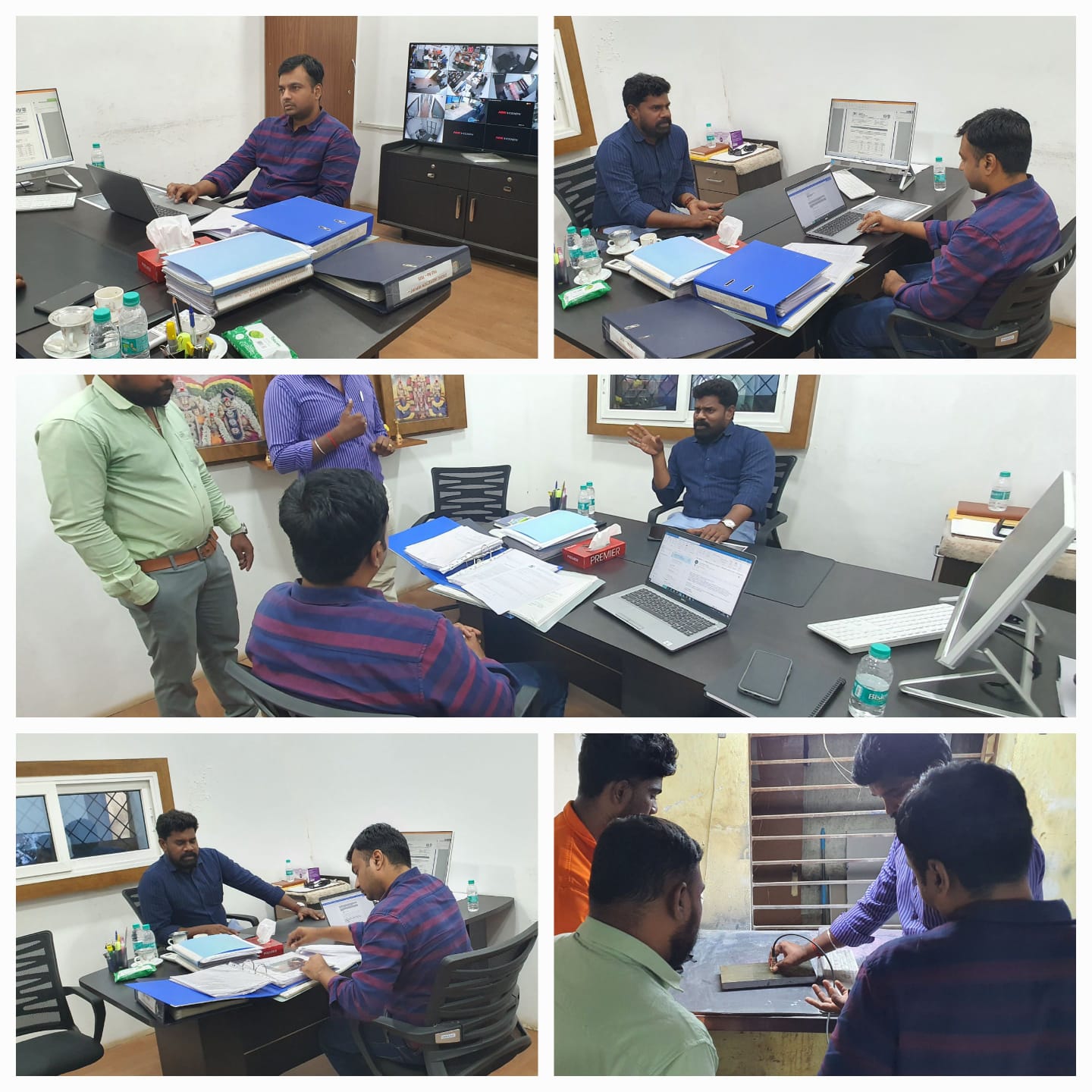
Here are some key mandatory elements:
- Written Procedures and Guidelines: The company must have well-documented written procedures and guidelines that outline the entire proficiency assessment process. These documents should detail the assessment criteria, examination format, practical demonstration requirements, performance evaluation criteria, and the decision-making process for certification.
- Qualified Assessors: The proficiency assessment should be conducted by qualified and experienced assessors who possess in-depth knowledge of NDE methods and industry standards. These assessors should be impartial and capable of objectively evaluating the operator’s performance.
- Standardized Assessment Criteria: The assessment criteria should be well-defined and standardized to ensure consistency across all evaluations. This includes specifying the minimum passing score for the written examination and practical demonstration, as well as the requirements for certification.
- Safety Protocols: Safety should be a top priority during the proficiency assessment process. Clear safety protocols and guidelines must be established and followed to protect both the assessors and the operators during practical demonstrations and hands-on inspections.
- Sample Components and Equipment: Adequate sample components and NDE equipment should be provided to the operators for the practical demonstration. These samples should be representative of the types of inspections the operators will encounter in real-world scenarios.
- Confidentiality and Data Security: Ensure that all information related to the operators’ proficiency assessments is treated with strict confidentiality. Access to assessment results and personal data should be limited to authorized personnel only.
- Feedback and Development Plans: After the assessment, operators should receive detailed feedback on their performance, including areas of strength and areas for improvement. Development plans and resources for improvement should be provided to support the operator’s continuous growth.
- Appeals Process: Establish an appeals process that allows operators to contest assessment results if they believe they were unfairly evaluated. This process should be transparent and unbiased.
- Record Keeping: Keep comprehensive records of all proficiency assessments, including examination results, practical evaluation sheets, and certification status. These records should be securely stored for future reference and audits.
- Compliance with Standards: Ensure that the proficiency assessment process complies with relevant industry standards, codes, and regulations governing NDE practices.
- Continuous Improvement: Regularly review and update the proficiency assessment process to incorporate advancements in NDE technology, best practices, and industry requirements. Seek feedback from stakeholders to enhance the effectiveness of the assessments.
By incorporating these mandatory elements into the proficiency assessment process, the company can establish a robust and reliable evaluation system for NDE operators, ultimately contributing to the overall safety and quality of inspections and operations.
SOLUTIONS Facilities for Proficiency Assessment for Non-Destructive Evaluation(NDE) Operators
Thank you for joining us today as we introduce the exceptional facilities dedicated to the Proficiency Assessment of Non-Destructive Evaluation (NDE) Operators.
At NDT AND PWHT SOLUTIONS PVT LTD, we take immense pride in upholding the highest standards of safety, expertise, and accuracy in NDE practices.
The company provides a controlled environment for practical demonstrations, allowing operators to perform inspections with precision.
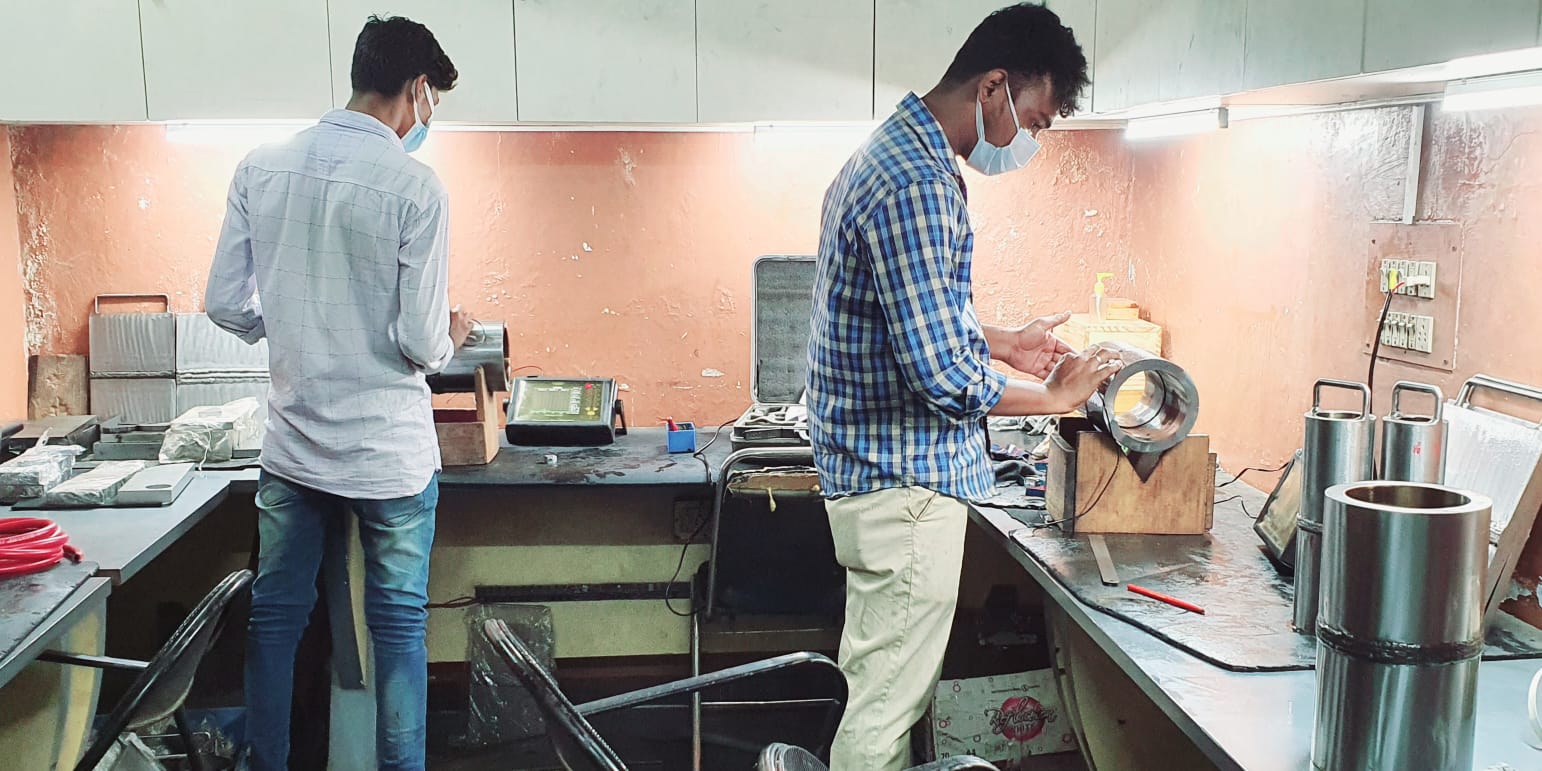
Our facilities cover a wide range of NDE methods:
Ultrasonic Testing (UT)
Radiographic Testing (RT)
RT Film Interpretation (RTFI)
Magnetic Particle Testing (MPT)
Liquid Penetrant Testing (PT)
Visual Inspection (VT)
Eddy Current Testing (ECT) – Tube Inspection
Internal Rotary Inspection System (IRIS)- Tube Inspection
Magnetic Flux Leakage (MFL) – Tube Inspection
Near-Field Testing (NFT) – Tube Inspection
Eddy Current Array (ECA) Crack detection
Acoustic Emission Testing (AET)
Ultrasonic Thickness Measurement (UTM)
Corrosion Mapping Using Ultrasonic Testing
Phased Array Ultrasonic Testing (PAUT) Weld inspection
Phased Array Ultrasonic Testing (PAUT) Corrosion Mapping
Long Range Ultrasonic Testing (LRUT)
Short Range Ultrasonic Testing (SRUT)
High Temp Corrosion Mapping
High-Temperature Hydrogen Attack
Tank Bottom MFL
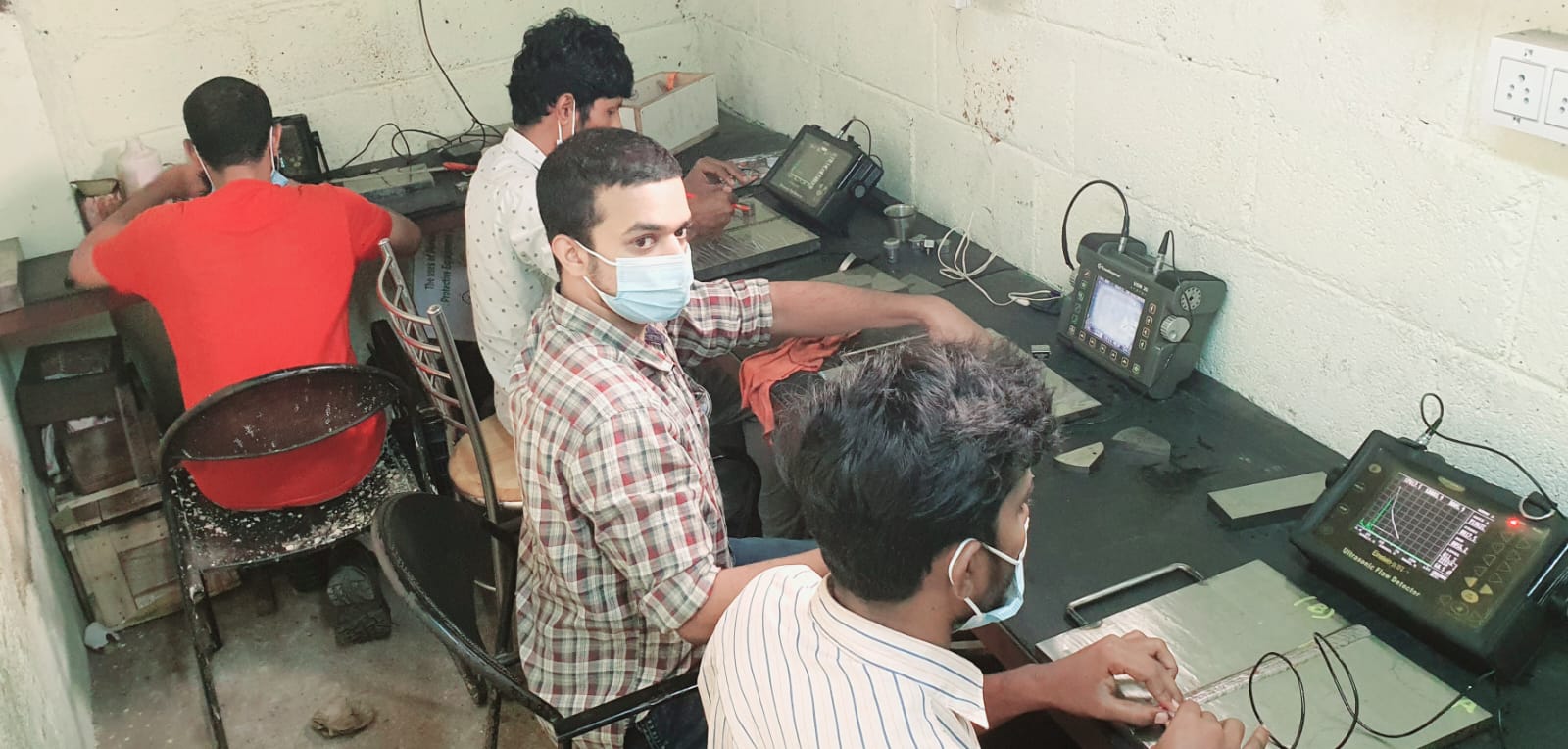
Facilities for proficiency assessment of NDE (Non-Destructive Evaluation) operators are essential to ensure a comprehensive and accurate evaluation of their skills and expertise. These facilities should provide a conducive environment for both theoretical and practical assessments. Here are some key facilities required for the proficiency assessment of NDE operators:
Training and Examination Centre:
A dedicated center equipped to conduct both theoretical and practical assessments.
Classroom facilities for written examinations and theoretical training.
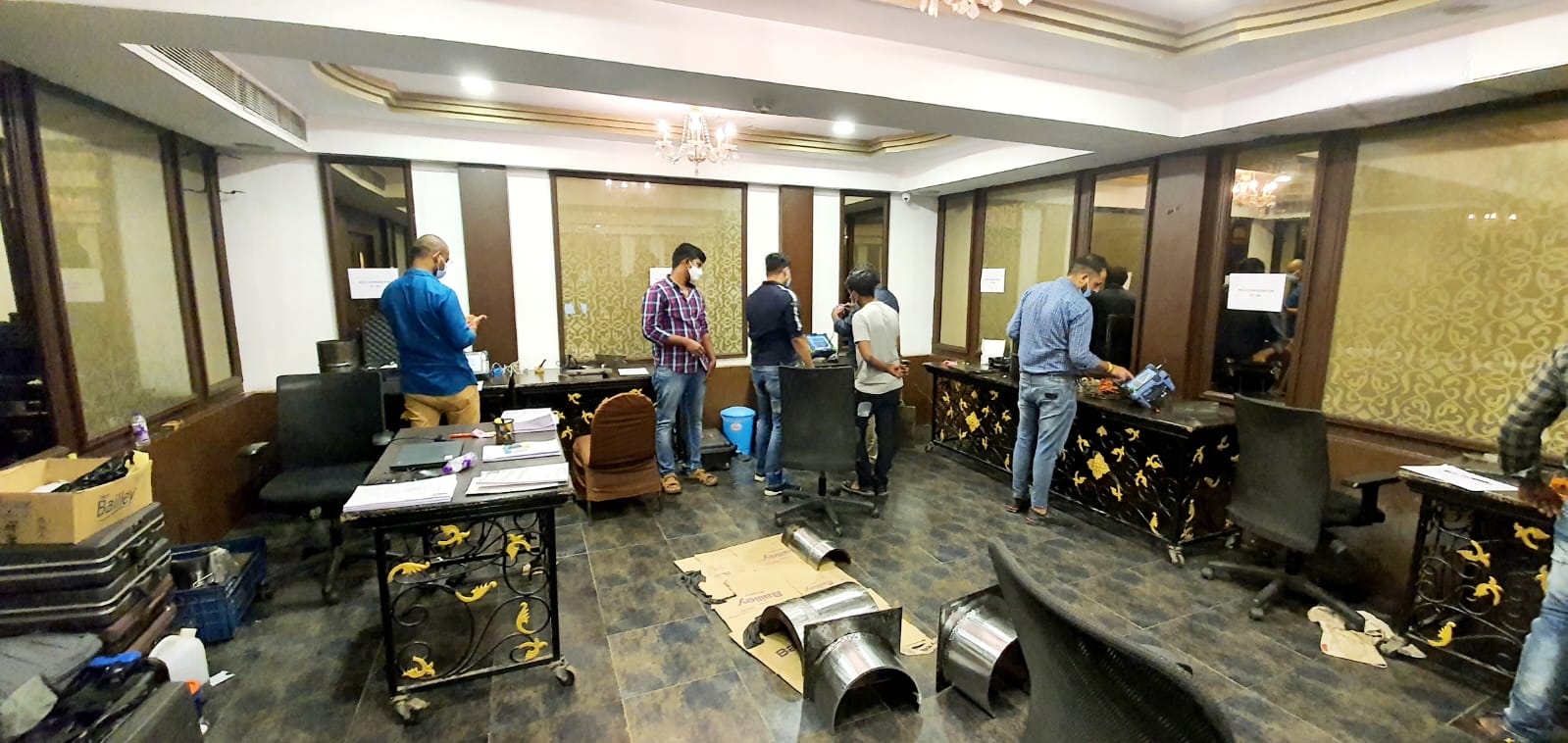
State-of-the-Art NDE Laboratory:
A well-equipped NDE laboratory with modern equipment representing various NDE methods (e.g., ultrasonic testing, radiography, eddy current testing).
The laboratory should provide a controlled environment for practical demonstrations and hands-on inspections.
Sample Components:
A comprehensive collection of sample components representing different materials, sizes, and configurations.
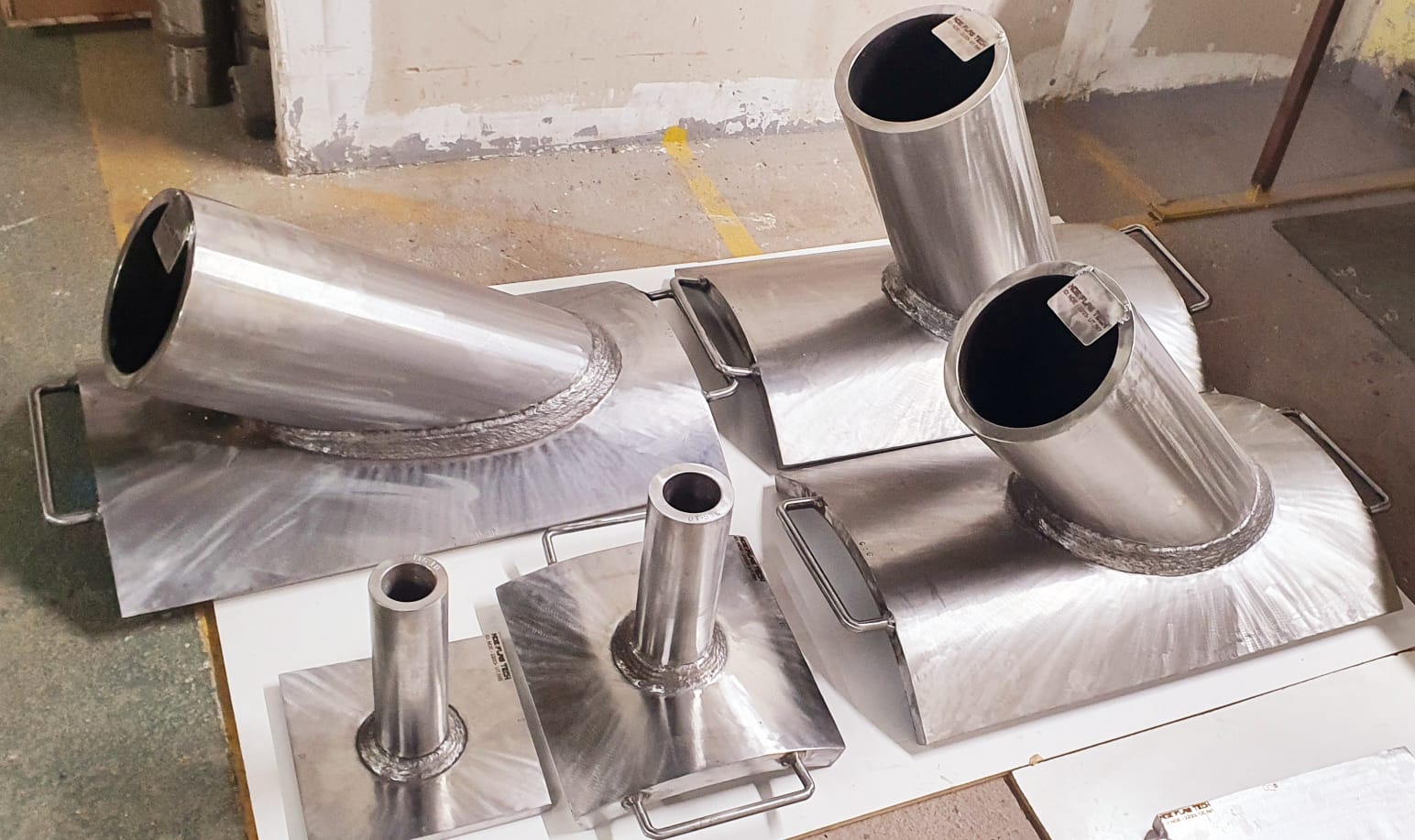
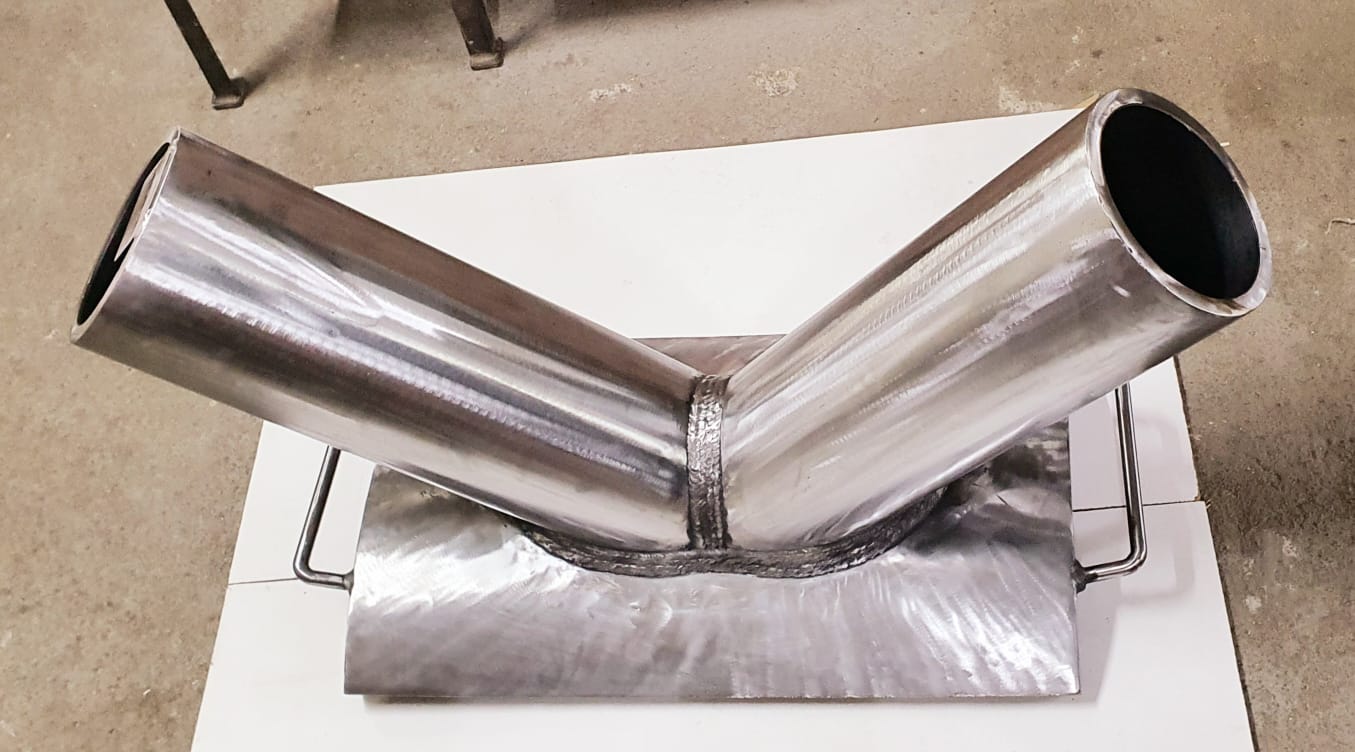
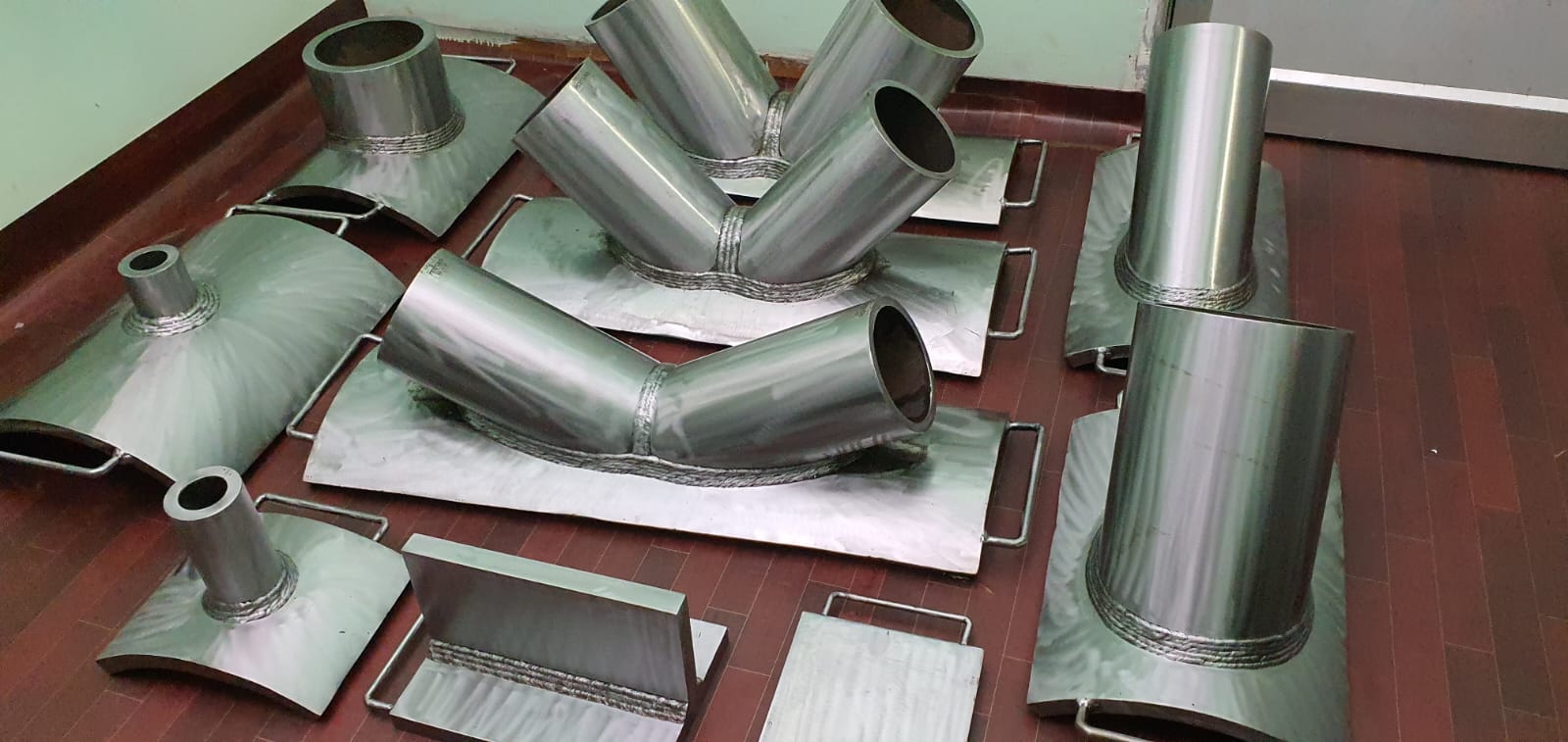
TKY Node joint in different angle & TKY – K joint for offshore structural
Simulated Industrial Environments:
Specialized simulation rooms or setups that replicate complex industrial conditions where NDE inspections are commonly performed.
These environments allow operators to practice inspections under challenging and realistic conditions.
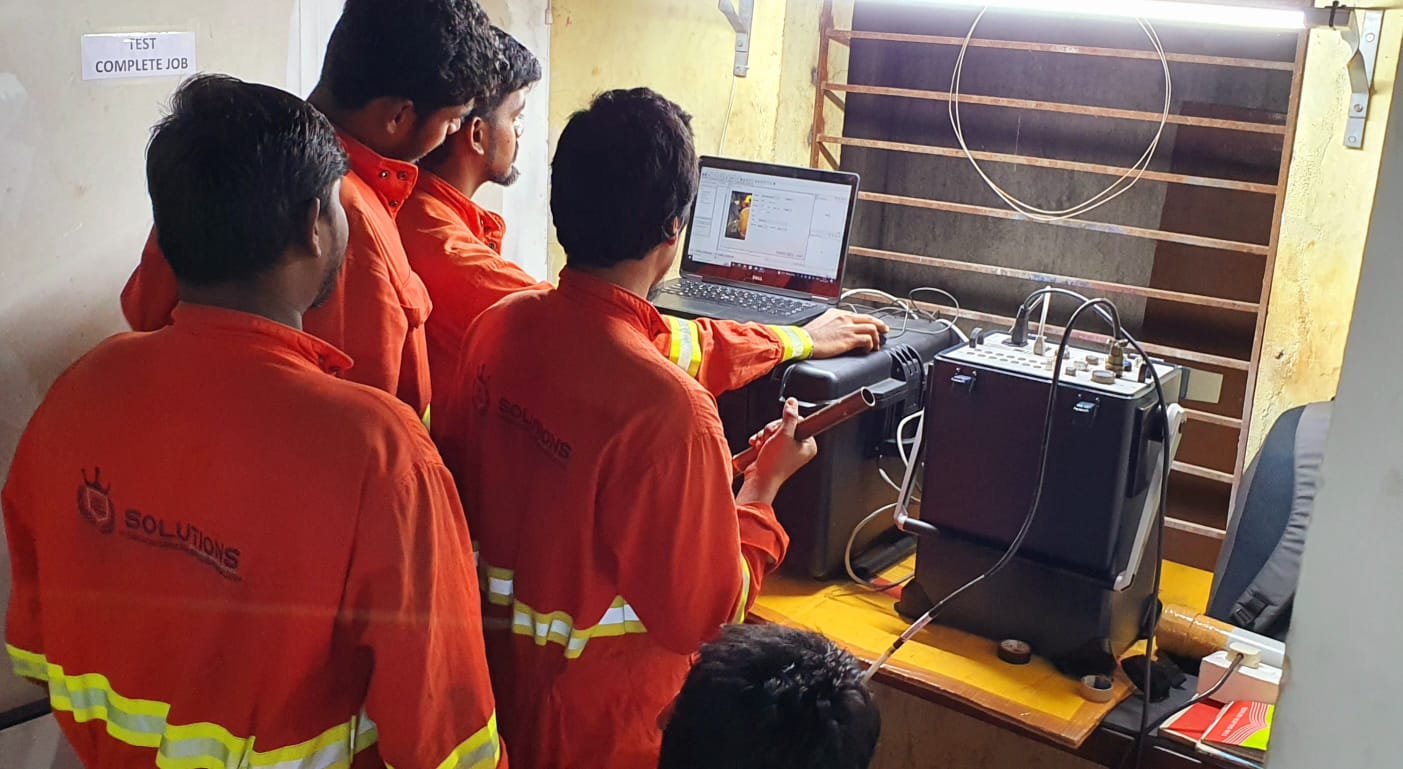
Modern facility for Tube Inspection
Safety Measures and Training:
Comprehensive safety protocols and guidelines to ensure the safety of operators during practical assessments.
Adequate safety training for operators to handle equipment and materials safely.
Data Analysis and Reporting Software:
Advanced data analysis and reporting software to evaluate inspection results accurately and efficiently.
This software aids in generating detailed reports for performance evaluation.
Certification and Documentation Centre:
A designated area for maintaining records, certification documents, and assessment results.
Ensures proper documentation and confidentiality of assessment records.
Training and Development Centre:
A facility offering continuous learning opportunities and professional development for NDE operators.
Workshops, seminars, and specialized courses to keep operators up-to-date with industry advancements.
Qualified Assessors and Instructors:
Experienced and certified assessors who are well-versed in NDE methods and industry standards.
Trained instructors to conduct theoretical training and provide guidance to operators.
Emergency Response Facilities:
Adequate provisions for handling emergency situations during assessments.
Ensuring operators are trained in emergency response protocols.
Client Engagement and Feedback Area:
A space for clients and stakeholders to provide feedback and discuss assessment-related matters.
Regular feedback sessions to improve assessment processes based on stakeholders’ inputs.
Each method is supported by specialized equipment to accommodate various inspection needs.
Facilities at our Centre:
PHASED ARRAY AND TOFD INSPECTION SET UP
We are delighted to announce that our training and examination facilities now include a considerable number of Phased Array Ultrasonic Testing (PAUT) and Time-of-Flight Diffraction (TOFD) inspection setups. With the addition of these advanced NDT techniques, we aim to provide our operators with comprehensive training and proficiency assessment opportunities.
The incorporation of “N” number of PAUT and TOFD inspection setups signifies our commitment to offering the latest and most relevant technologies in the NDT industry.
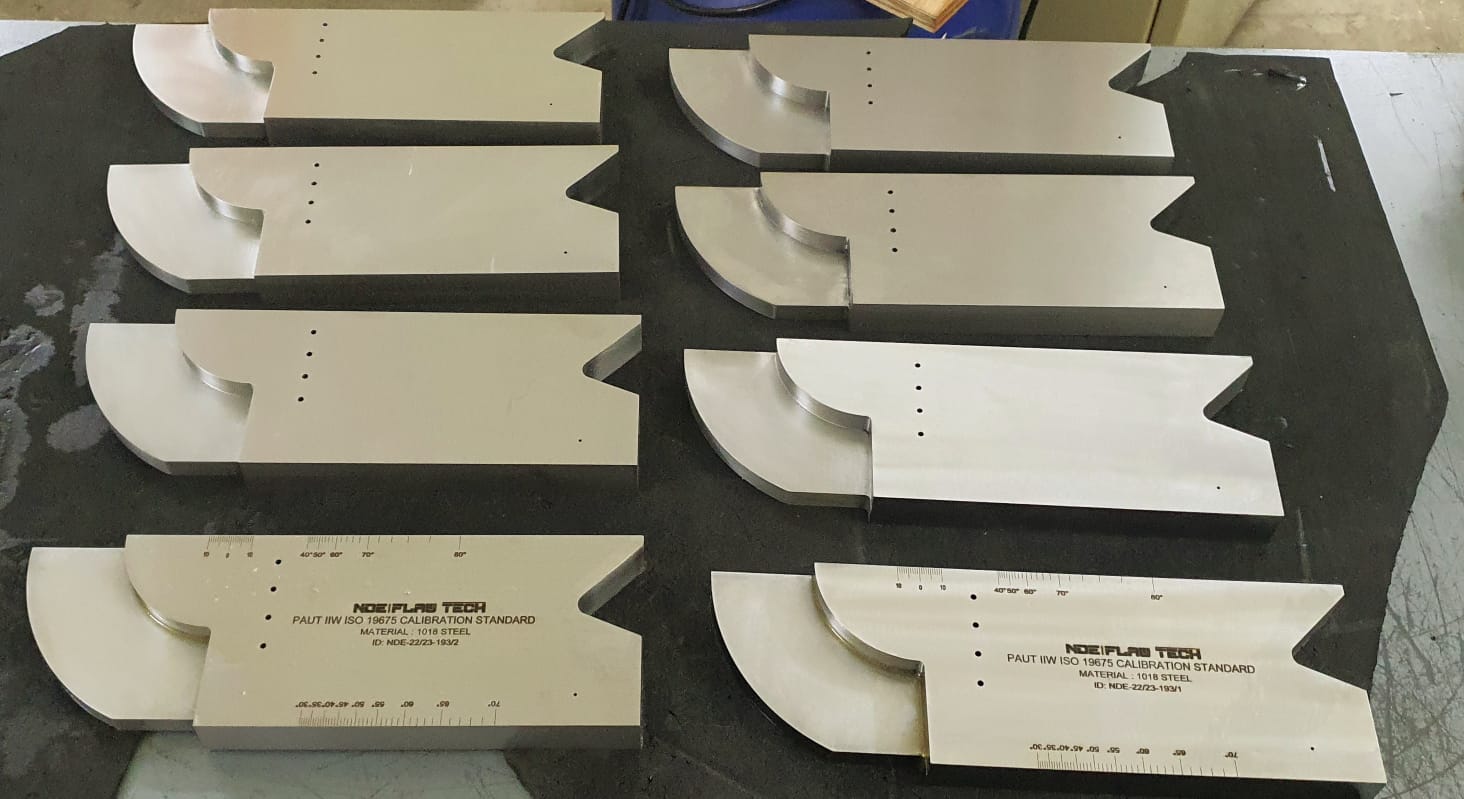
CALIBRATION BLOCKS AS PER ASME
We are excited to inform you that we have a complete set-up of piping calibration requirements as per the ASME (American Society of Mechanical Engineers) standards. This development marks a significant milestone in our commitment to providing top-notch services and meeting the highest industry standards.
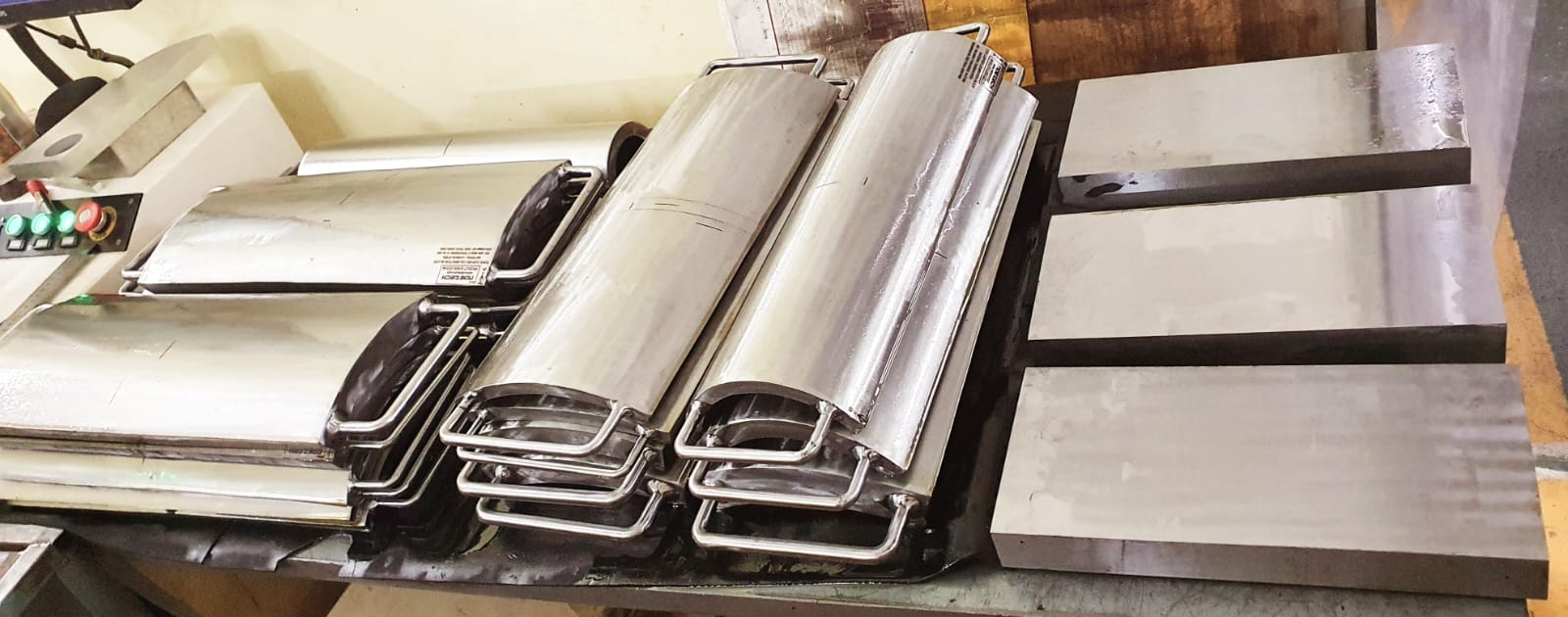
CASTING AND FORGING SPECIMENS FOR PENETRANT TEST
I wanted to bring to your attention that we have penetrant testing for casting and forging specimens. This addition to our testing capabilities signifies our commitment to maintaining the highest quality standards and ensuring the integrity of our products.
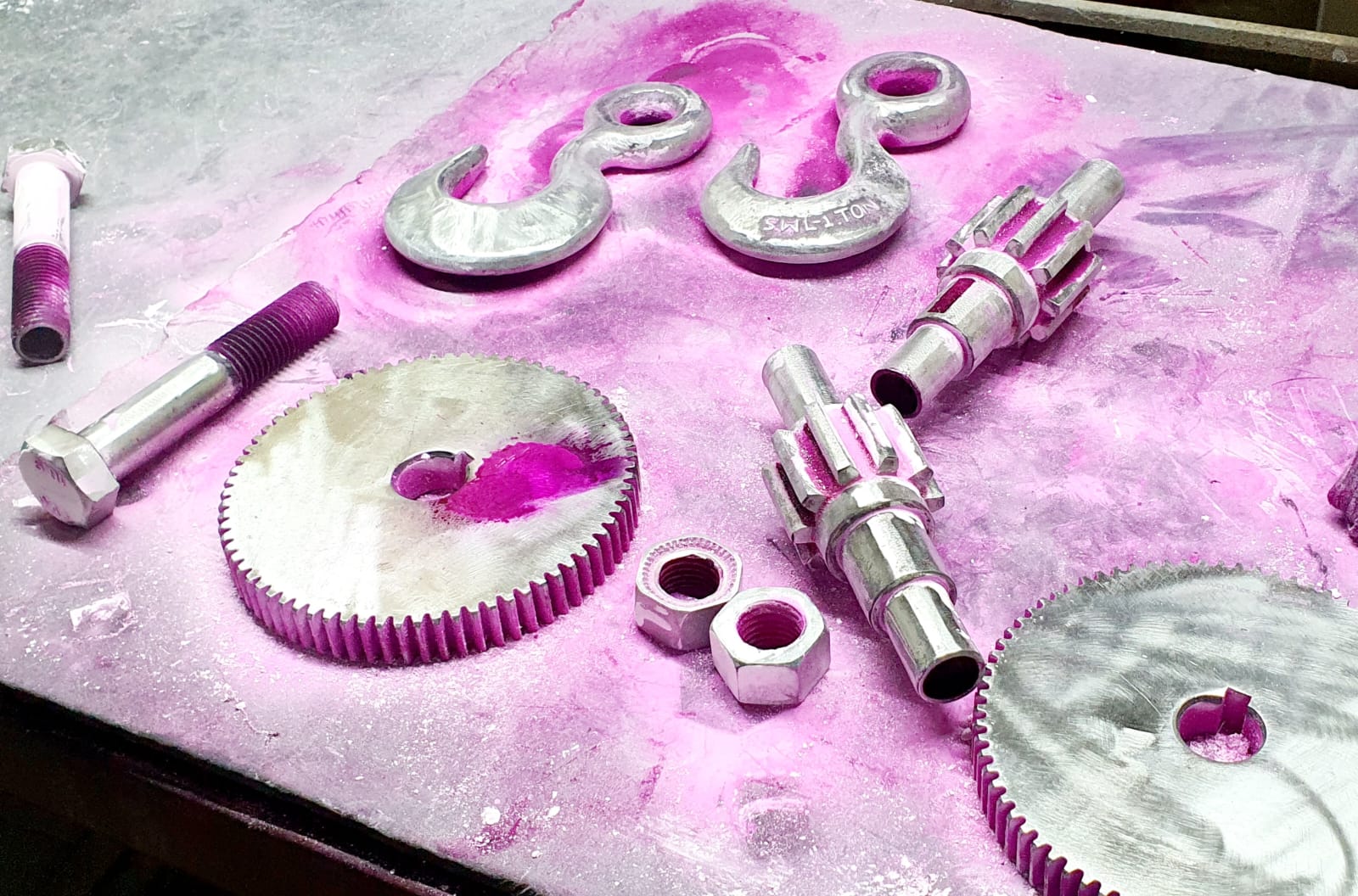
Penetrant testing is a crucial non-destructive testing (NDT) method used to detect surface defects in materials. With the introduction of this testing technique for casting and forging specimens, we can now identify even the smallest surface imperfections with precision and reliability.
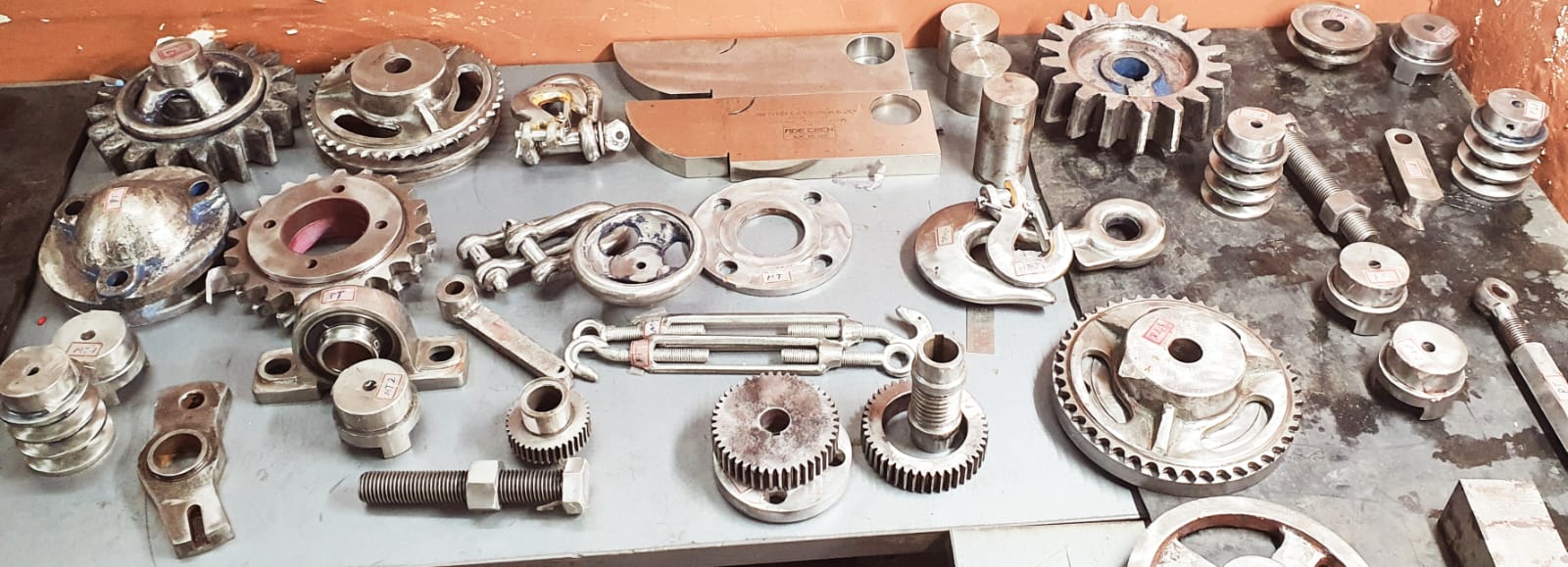
MAGNETIC FLUX LEAKAGE (MFL) TANK INSPECTION
MFL scanning is a non-destructive examination method which uses a magnetic field to detect corrosion and pitting in carbon steel. A powerful magnet is scanned close to the surface to ‘saturate’ the steel with the magnetic field.
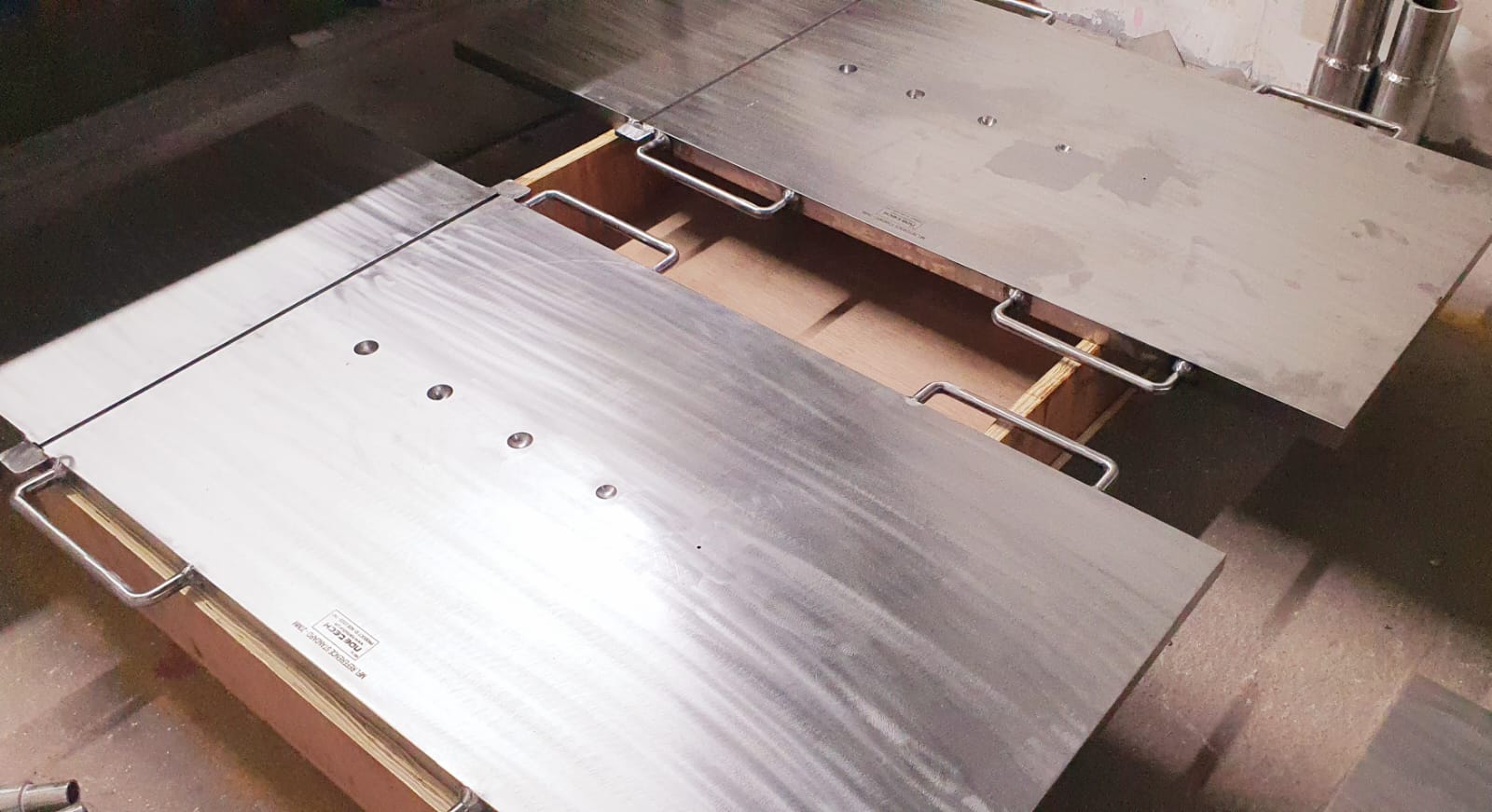
The Tank Floor MFL Test Plate is specifically designed to simulate the conditions found in tank floors, enabling us to accurately evaluate and detect defects, such as corrosion and pitting, in the floor’s metal structure. The MFL technique is known for its sensitivity to small flaws and its ability to provide reliable and detailed inspection data.
By utilizing this advanced testing plate, we can ensure the highest level of precision in assessing the condition of tank floors, mitigating the risk of undetected defects and supporting proactive maintenance and integrity management strategies.
FOR TUBE INSPECTION
We are delighted to announce that we now have a considerable number of individual tubes available for ECT, MFL, RFET, IRIS, NFT and more over APRIS training and examination purposes. This expansion in our resources is a testament to our commitment to providing comprehensive and hands-on training opportunities for NDT professionals.
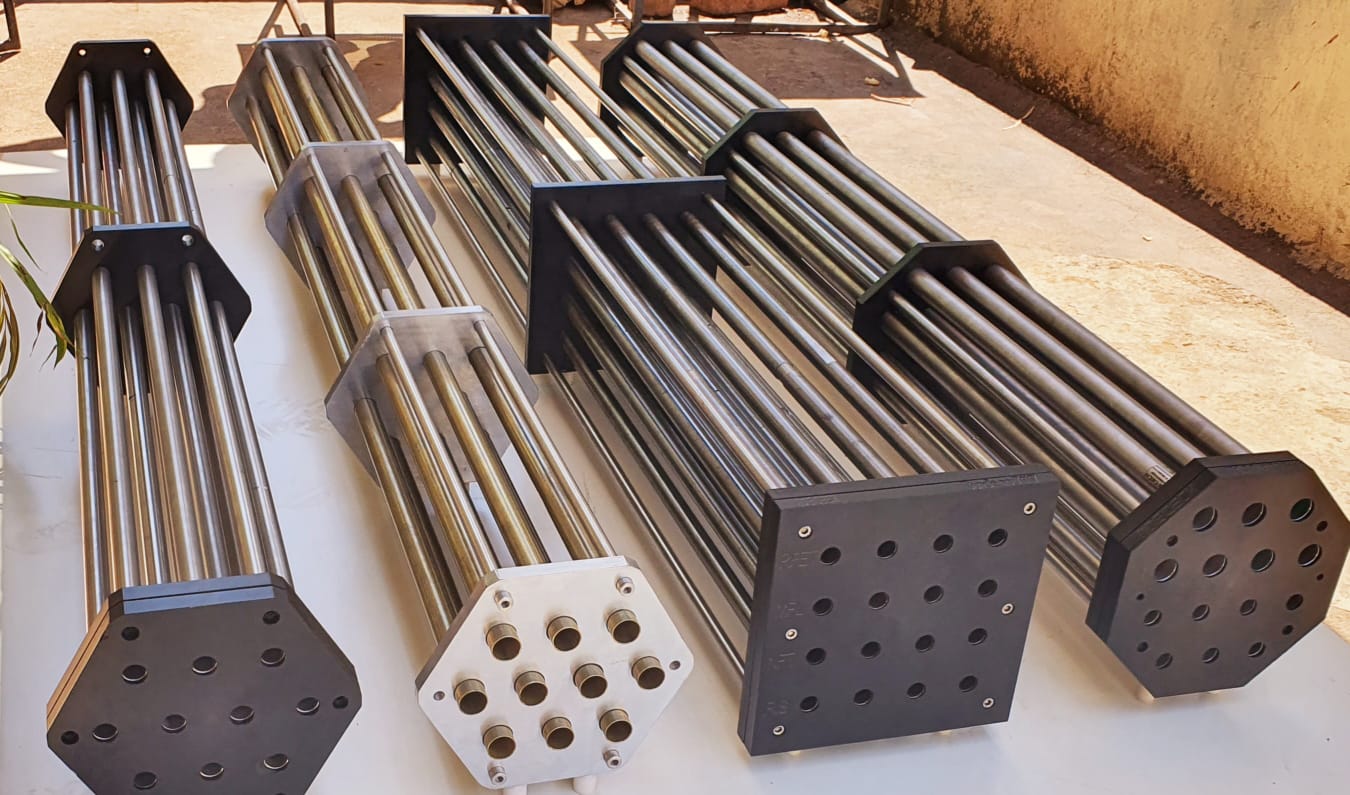
With this vast collection of individual tubes, our training and examination facilities offer a diverse range of materials, sizes, and configurations. These tubes serve as ideal specimens for operators to practice and refine their skills in ECT inspections, ensuring the highest level of proficiency.
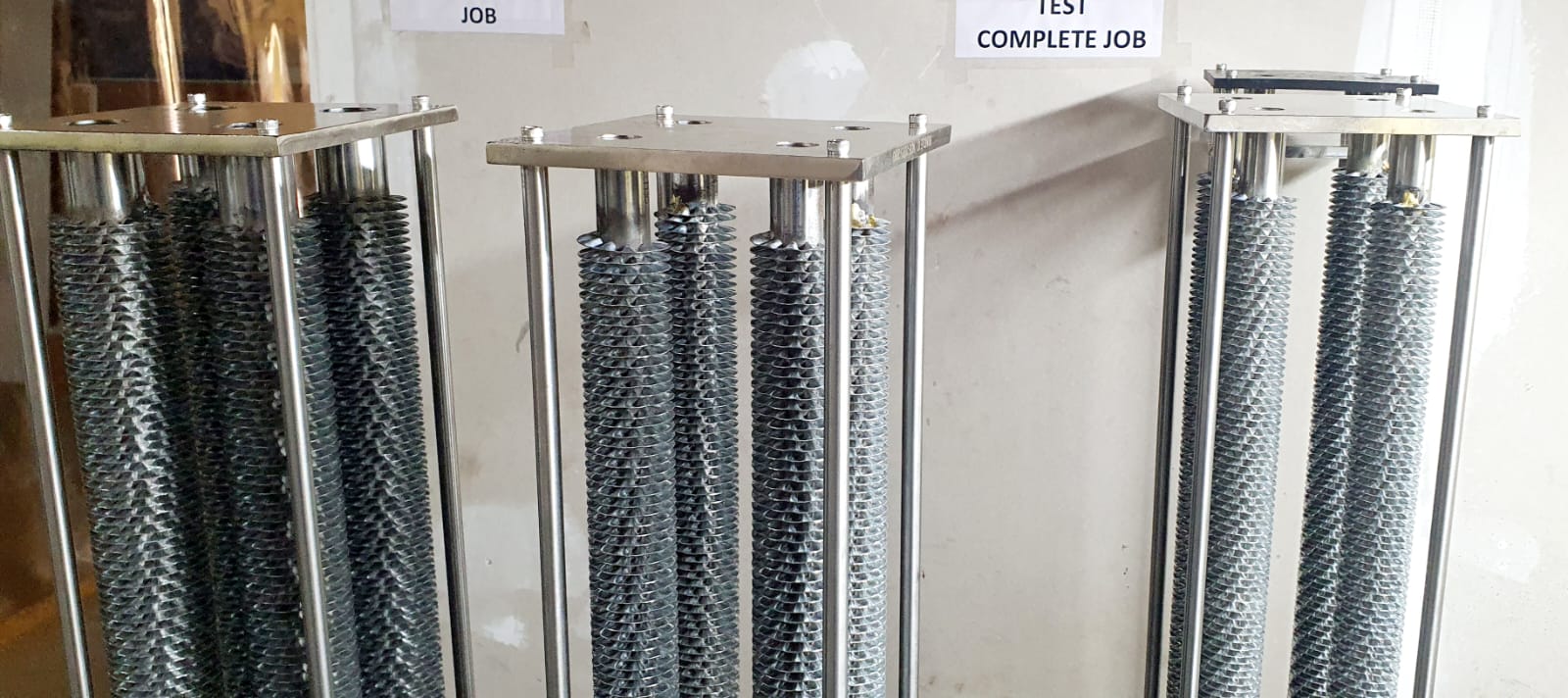 Fin tube bundle for tube inspection
Fin tube bundle for tube inspection
EDDY CURRENT SURAFCE INSPECTION
We have “N” number of Eddy Current Surface Inspection test specimens, an advanced and versatile Non-Destructive Testing (NDT) method that we now offer as part of our comprehensive inspection services.
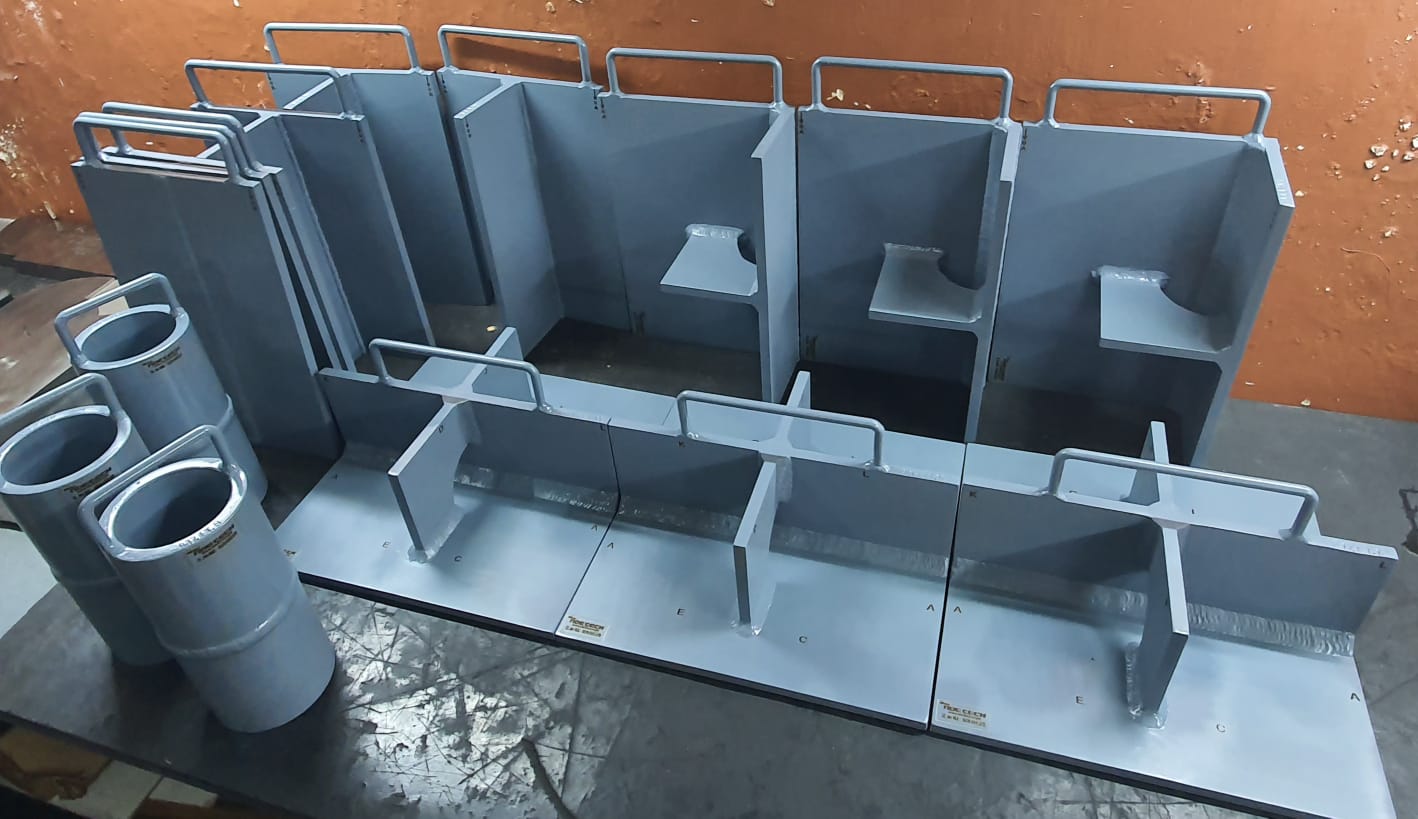
Eddy Current Surface Inspection is a powerful technique used to assess the integrity of conductive materials, detecting surface cracks, defects, and variations in conductivity. This non-contact method allows us to perform inspections without the need for physical contact with the material, making it ideal for a wide range of applications, including aerospace, automotive, manufacturing, and more.
The USAF General Purpose Eddy Current Standard Block is a versatile and essential tool used in Non-Destructive Testing (NDT) for calibrating and standardizing eddy current equipment. This standardized block is specifically designed to mimic various defects and conditions commonly encountered in industrial applications.
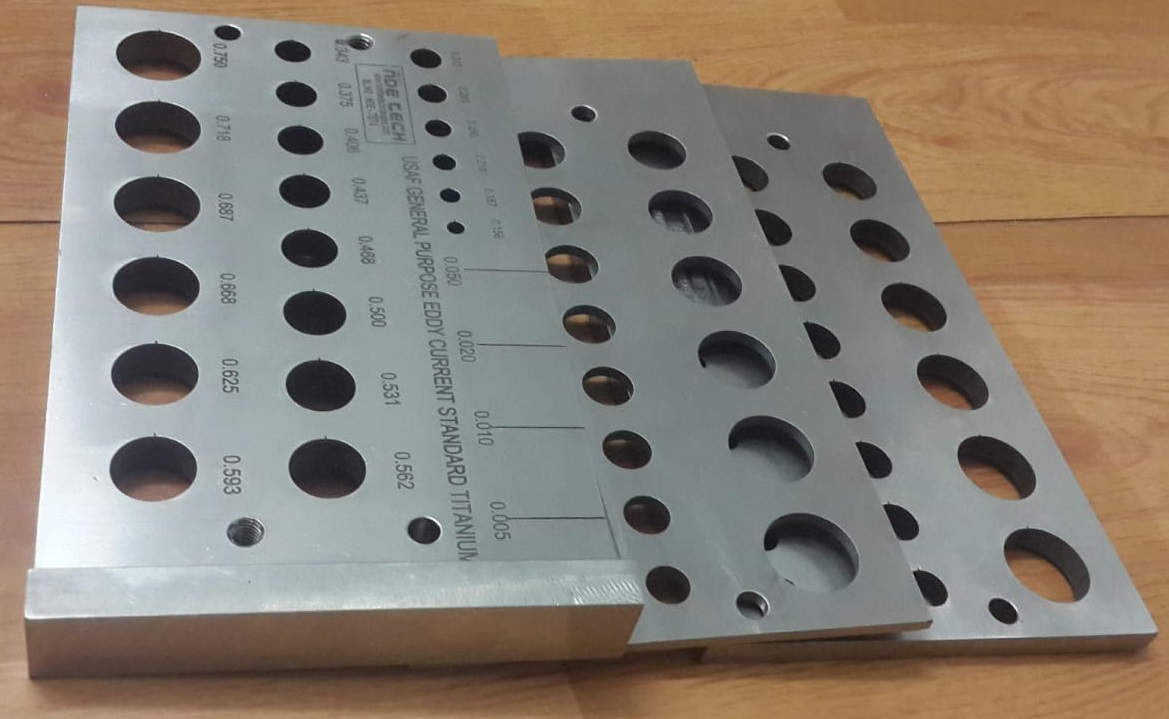
VACUUM BOX FOR TANK FLOOR INSPECTION
I am thrilled to share that we have recently incorporated a Vacuum Box into our tank floor inspection training and examination program. This addition further strengthens our commitment to providing cutting-edge solutions for Non-Destructive Testing (NDT) and ensuring the highest level of quality and safety in tank floor inspections.
The Vacuum Box is an invaluable tool used to perform leak testing on tank floors. Its ability to detect leaks, cracks, and other defects in welds and seams allows us to assess the integrity of tank floors with exceptional accuracy and efficiency.
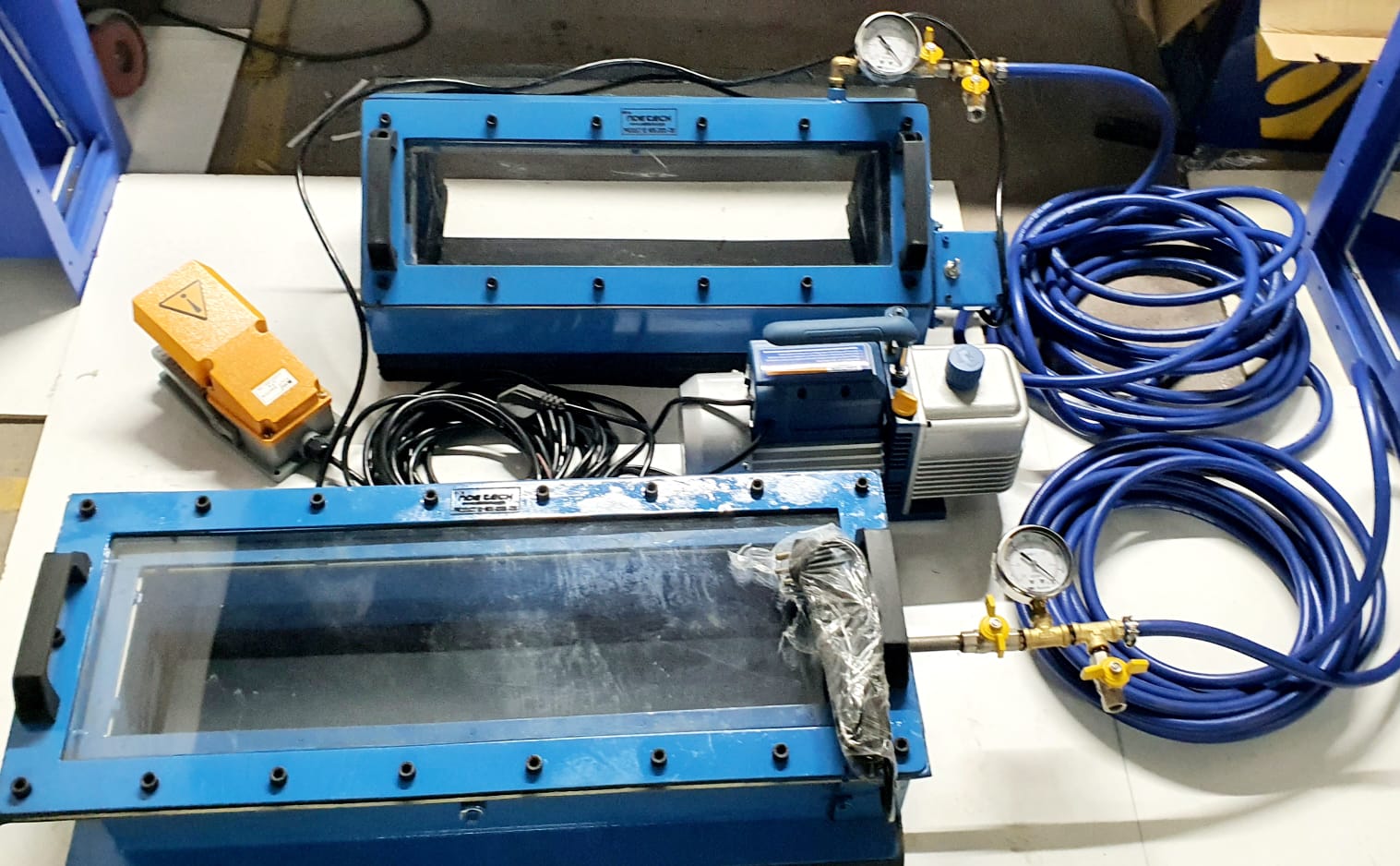
During our training sessions, participants will have hands-on experience using the Vacuum Box on a variety of tank floor specimens, replicating real-world inspection scenarios. Our experienced instructors will guide them through theoretical knowledge and practical demonstrations, ensuring a comprehensive understanding of the inspection process.
Moreover, our examination program now includes practical assessments involving the Vacuum Box, providing participants with the opportunity to showcase their expertise and proficiency in leak testing techniques.
We believe that the incorporation of the Vacuum Box into our training and examination program will not only elevate the skills of NDT professionals but also contribute to enhancing the safety and reliability of tank floor inspections in diverse industrial applications.
CORROSION, EROSION, AND PITTING SPECIMENS
Corrosion, erosion, and pitting specimens are vital components used in Non-Destructive Testing (NDT) to simulate and assess the effects of degradation on materials and structures. These specimens play a critical role in evaluating the integrity of various assets, such as pipelines, storage tanks, and aircraft components.
Corrosion specimens mimic the effects of corrosion, a gradual deterioration of metals caused by chemical reactions with the environment. Erosion specimens simulate the wear and degradation caused by abrasive substances or fluid flow. Pitting specimens represent localized corrosion, resulting in small cavities or pits on the material’s surface.
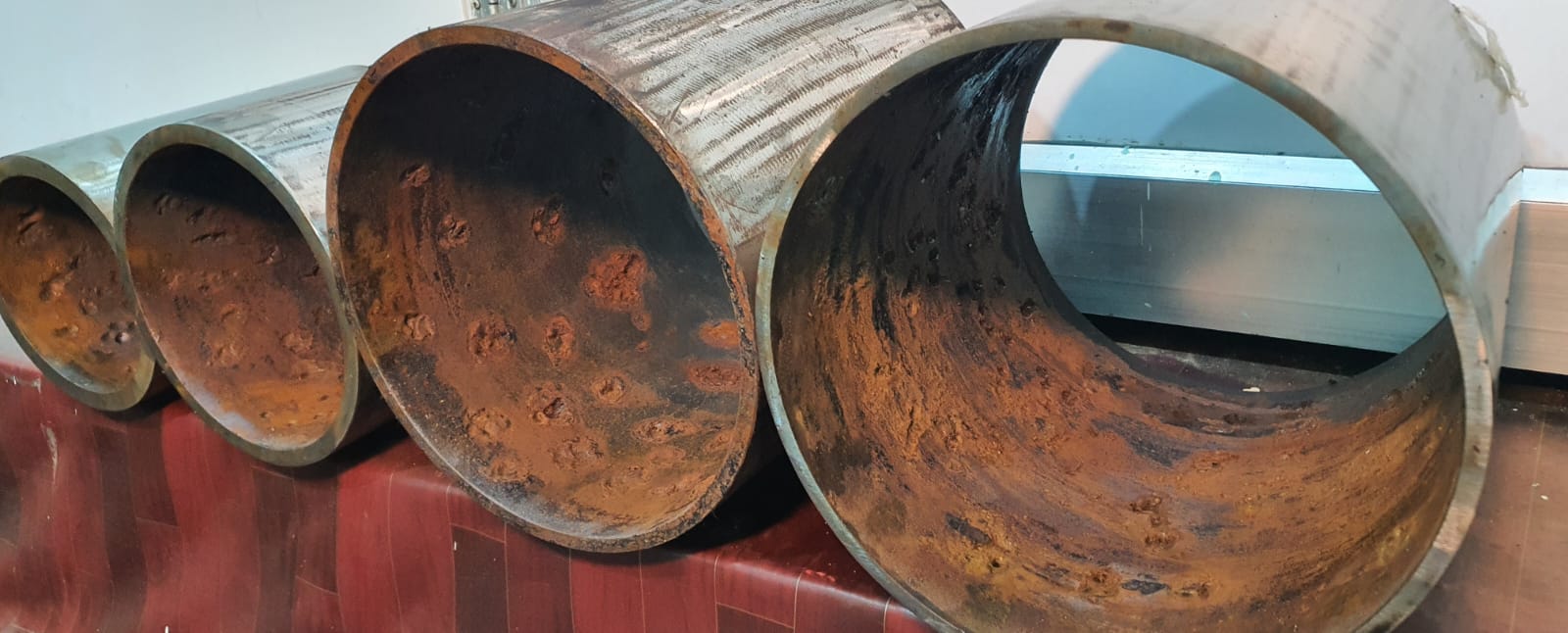
NDT technicians use these specimens during inspections to evaluate the extent and severity of degradation in industrial assets. Techniques like ultrasonic testing, radiography, and eddy current testing are applied to detect and quantify the corrosion, erosion, and pitting damage.
HIGH-STANDARD CHEMICAL STORAGE FACILITY FOR MT AND PT CONSUMABLES
We have our high-standard chemical storage facility, which plays a pivotal role in supporting Magnetic Particle Testing (MT) and Liquid Penetrant Testing (PT) processes. This cutting-edge facility underscores our commitment to maintaining the highest quality standards and ensuring the integrity of our NDT (Non-Destructive Testing) services.
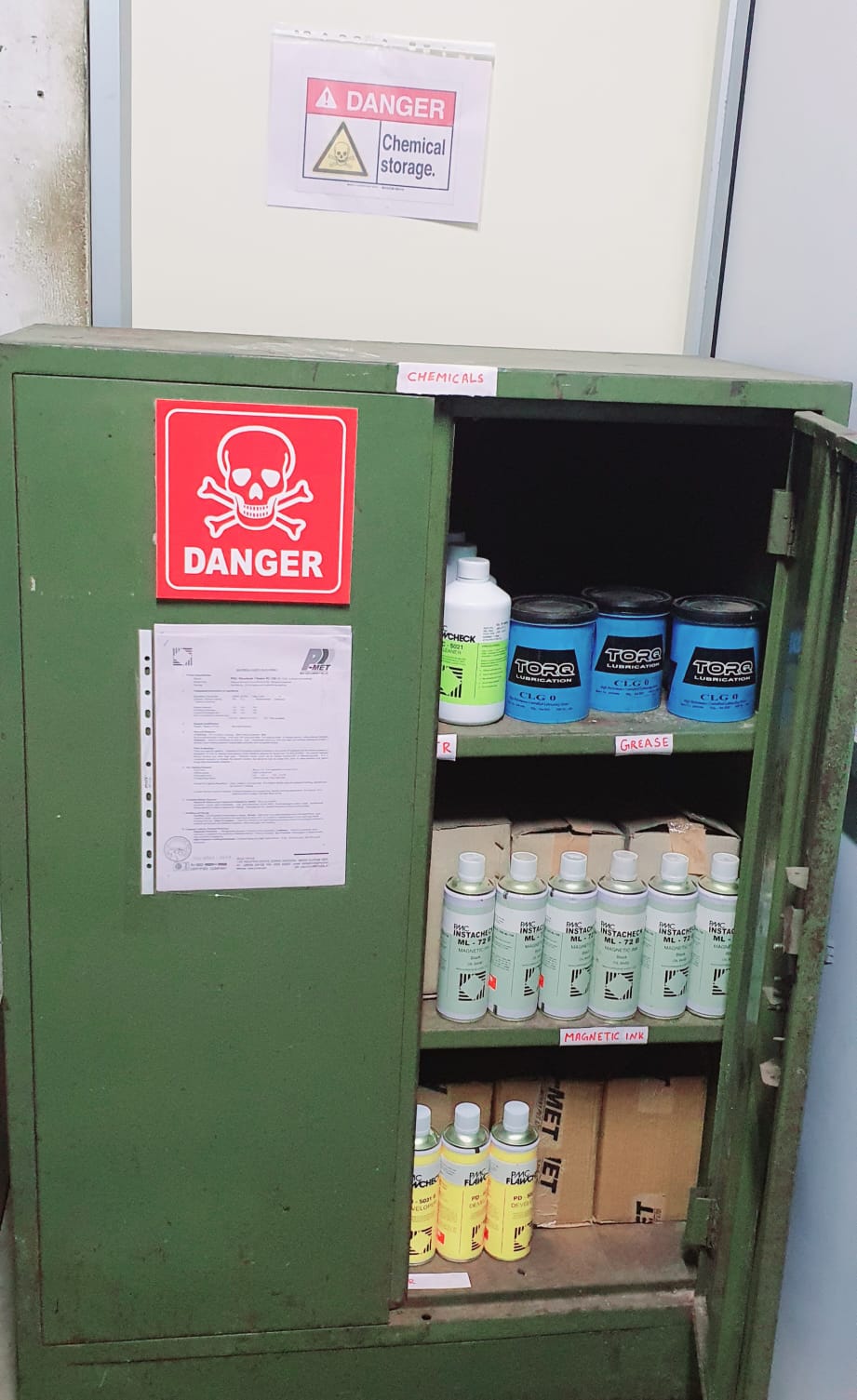
Our chemical storage facility adheres strictly to industry regulations and safety protocols, providing a controlled and secure environment for the storage of MT and PT materials. It is equipped with state-of-the-art storage solutions to ensure the longevity and efficacy of the chemicals, optimizing their performance during inspections.
MOCK-UP TEST SAMPLE MANUFACTURING FACILITY
Our facilities are fully equipped and capable of handling any type of Mock-up Test component. With a diverse range of resources and expertise, we are well-prepared to cater to your specific testing requirements with precision and efficiency.
Our commitment to excellence and quality ensures that each Mock-up Test is conducted with meticulous attention to detail. We employ state-of-the-art equipment and adhere to industry best practices, guaranteeing accurate and reliable results.
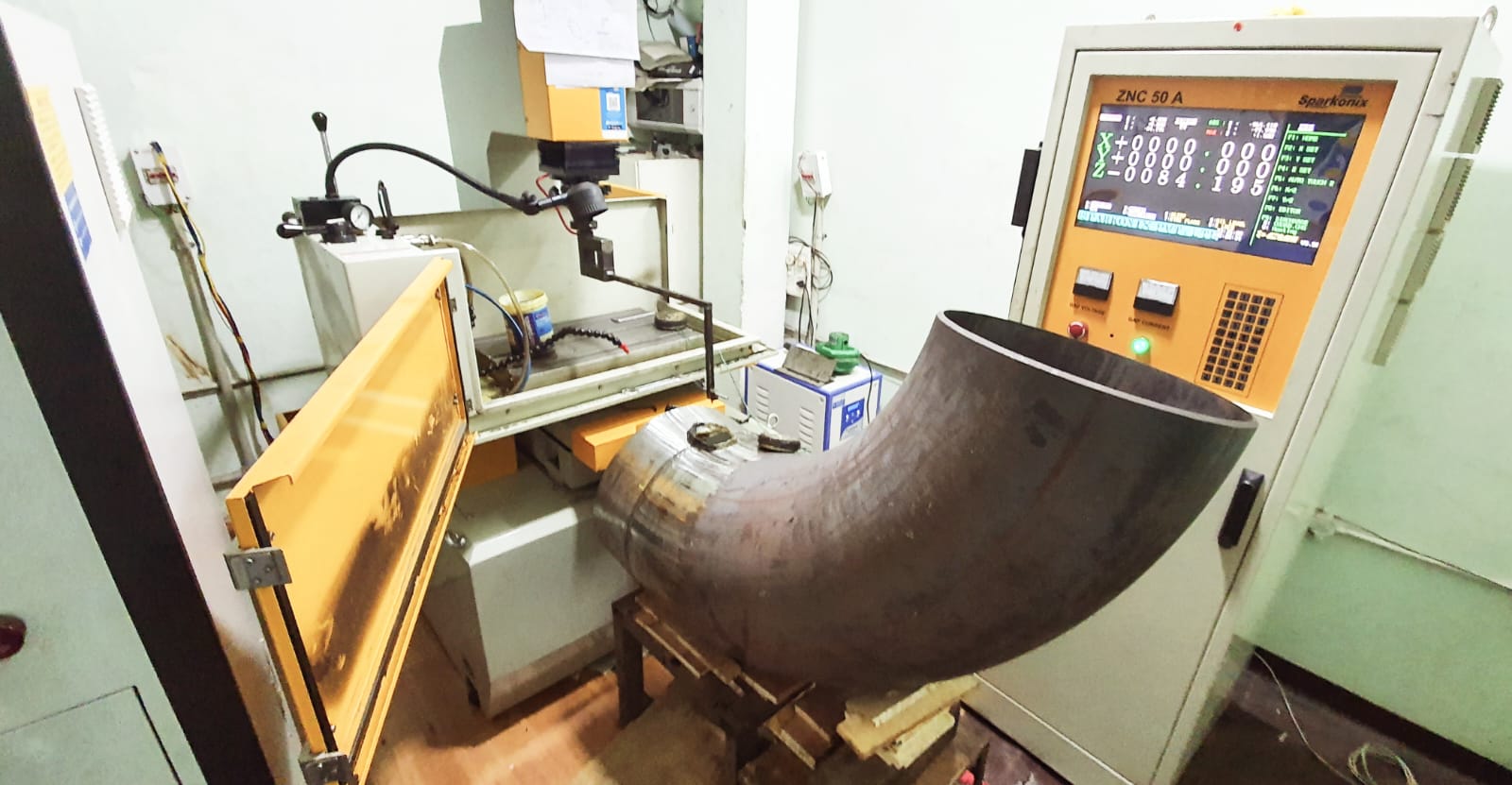
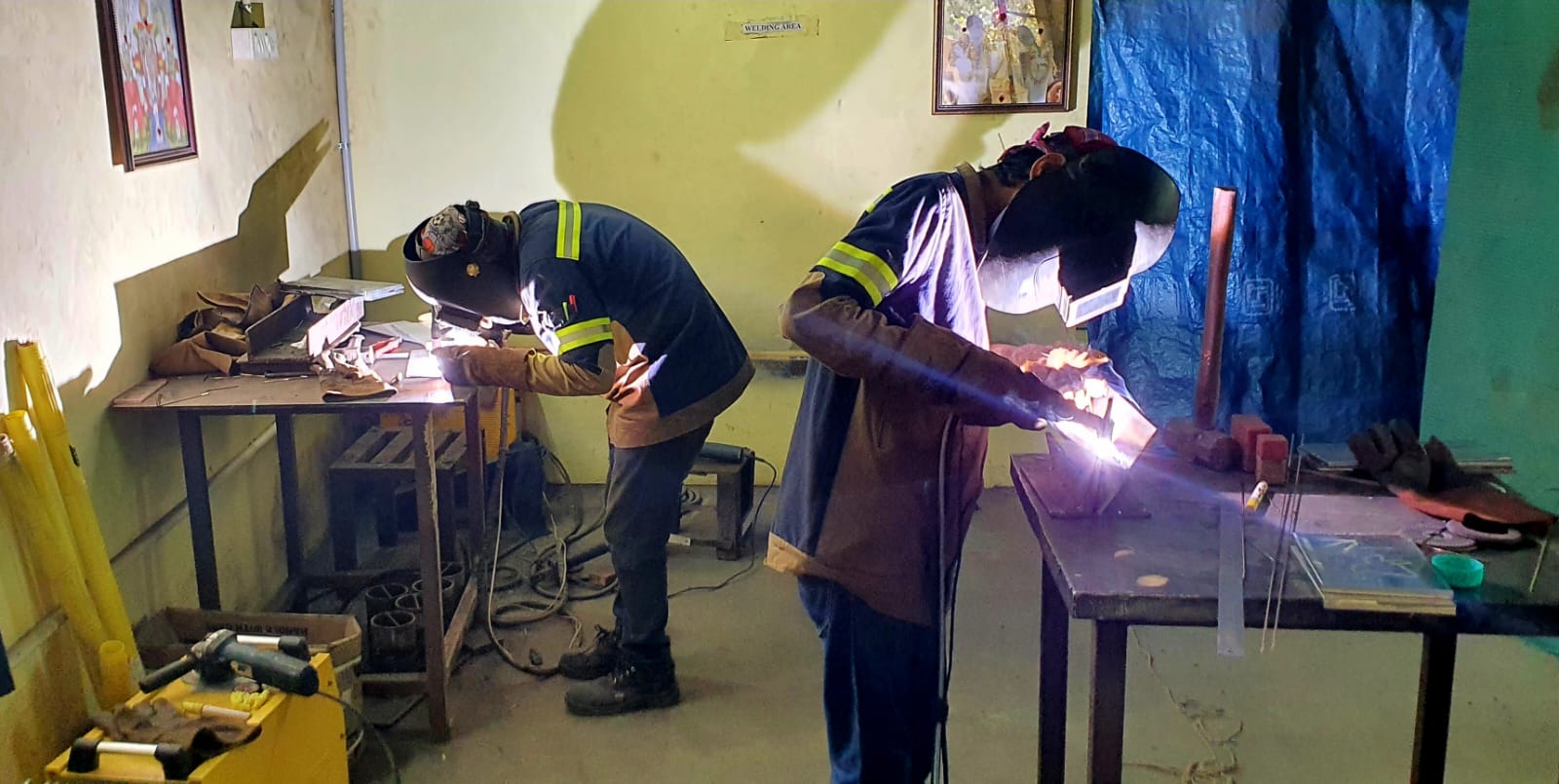 We have a complete facility for customized Mock-up Test Sample Manufacturing
We have a complete facility for customized Mock-up Test Sample Manufacturing
OUR CANTEEN FACILITY – A PLACE OF DELIGHTFUL DINING
We are pleased to inform you that we have an in-house canteen facility, catering to the culinary needs of all our employees and guests, entirely free of cost. This thoughtful addition to our workplace exemplifies our commitment to fostering a positive and inclusive environment for everyone.
The in-house canteen is designed to offer a delightful dining experience, providing a wide variety of delectable cuisines to suit different tastes and preferences. Our team of talented chefs and dedicated staff ensures that every meal is prepared with the utmost care and attention to hygiene and quality.
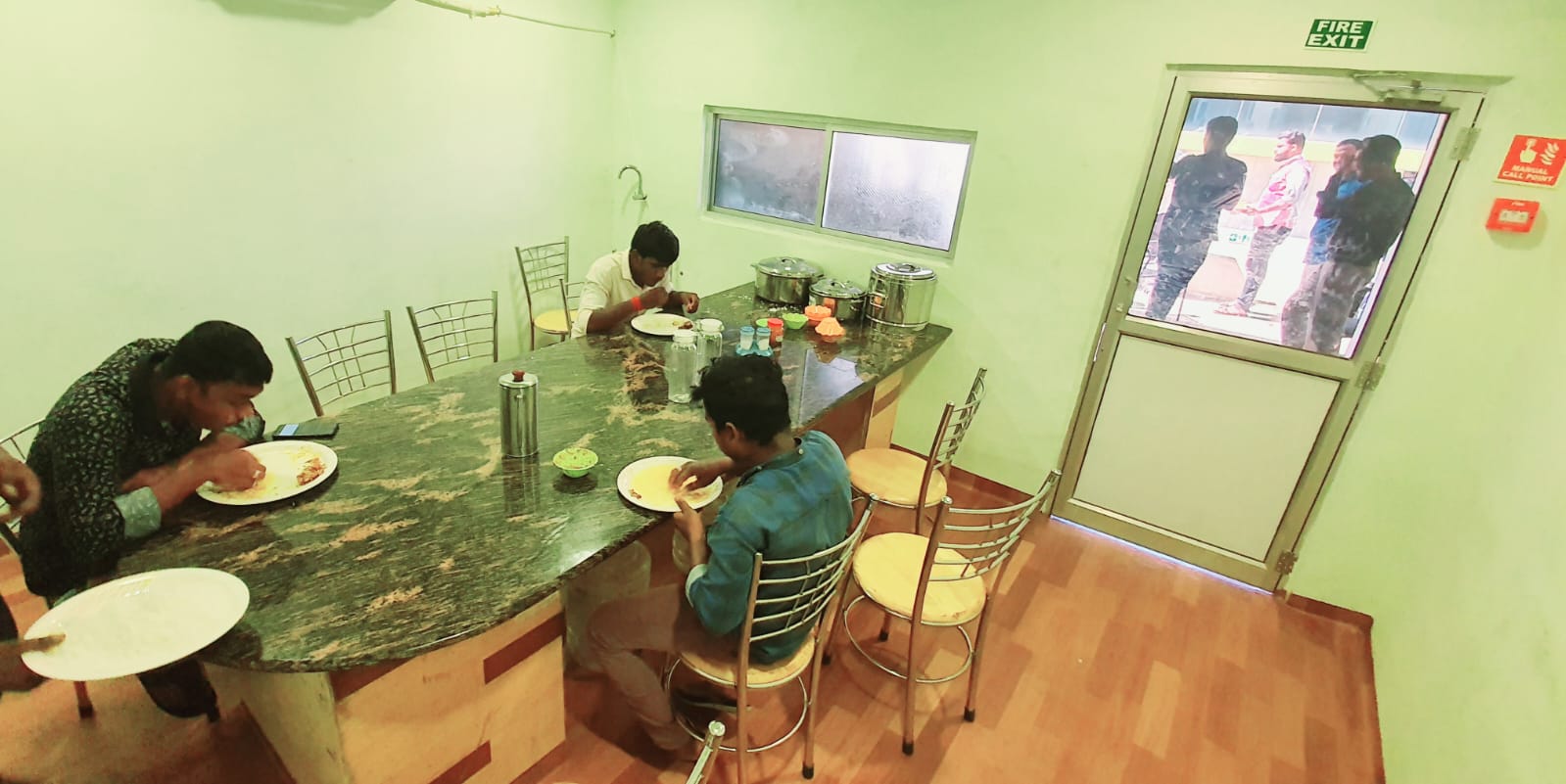
We extend this facility to our esteemed guests as well, ensuring that they feel welcomed and valued during their visits to our premises.
OUR ACCOMMODATION FACILITY – YOUR HOME AWAY FROM HOME!
At SOLUTIONS, we take immense pride in providing you with a comfortable and inviting accommodation facility that feels just like home. Whether you are visiting us for business or leisure, we strive to ensure that your stay with us is a memorable and pleasant experience.

Our attentive and friendly staff is always at your service, ready to assist you with any requirements or queries you may have. We take great pride in going the extra mile to ensure that your stay is nothing short of exceptional.
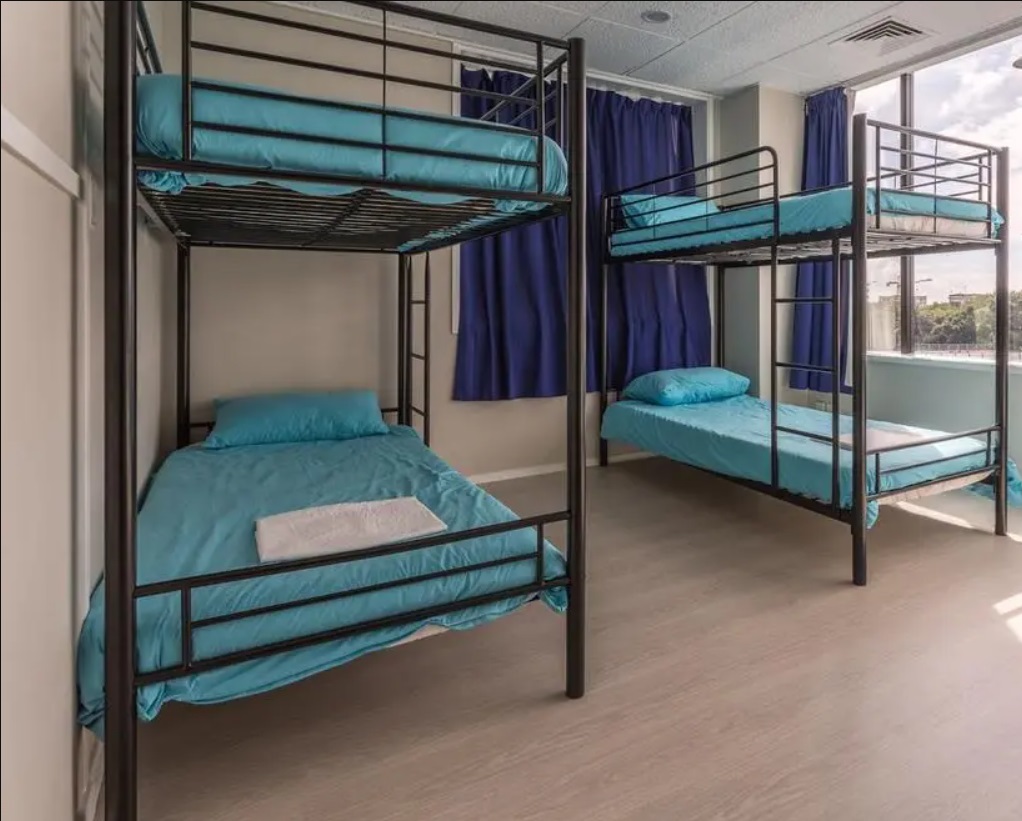
Whether you are here for a short visit or an extended stay, we aim to exceed your expectations and make you feel right at home. Your comfort and satisfaction are our top priorities.
WORLD LARGEST FACILITY FOR NDT TRAINING AND EXAMINATION
We offer an expansive examination center, equipped to accommodate a large number of candidates for certification assessments. This facility enables us to efficiently conduct exams while maintaining the highest standards of integrity and security.
Our commitment to continuous improvement drives us to stay at the forefront of NDT technology and industry best practices. As the world’s largest facility, we take pride in shaping the future of NDT professionals and contributing to the safety and quality of inspections worldwide.
We are eager to welcome you to our world-class facility and embark on a journey of excellence together. Thank you for choosing us as your preferred NDT training and examination partner.
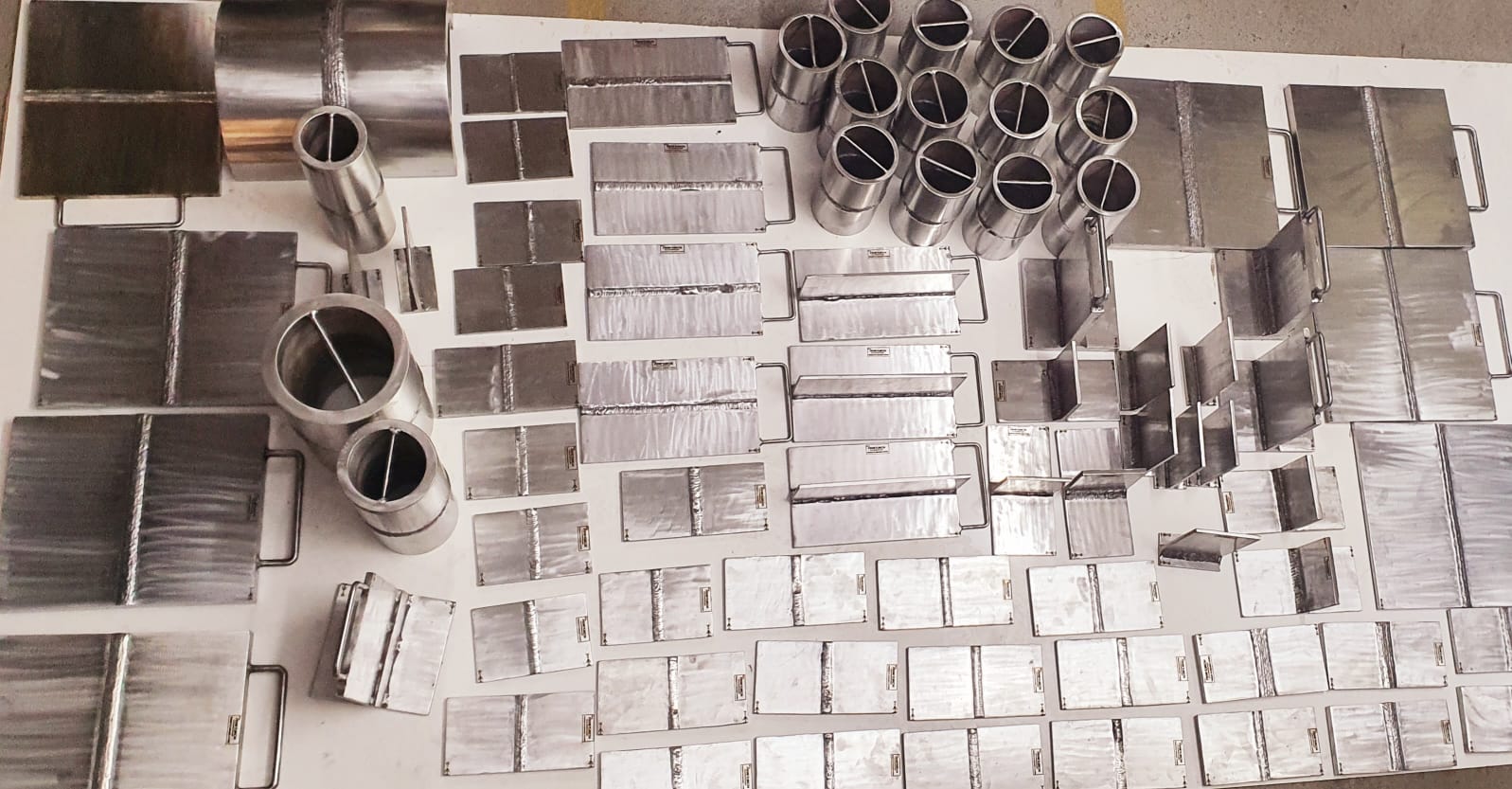
OUR PARTICIPATION IN NDT SEMINARS FOR THE DEVELOPMENT OF NEW TECHNOLOGIES!
We are delighted to share with you our journey of supporting the Non-Destructive Testing (NDT) industry’s growth through active participation in seminars focused on new technologies. Over the years, we have been dedicated to staying at the forefront of NDT advancements, and these seminars have been a key part of our commitment to innovation.
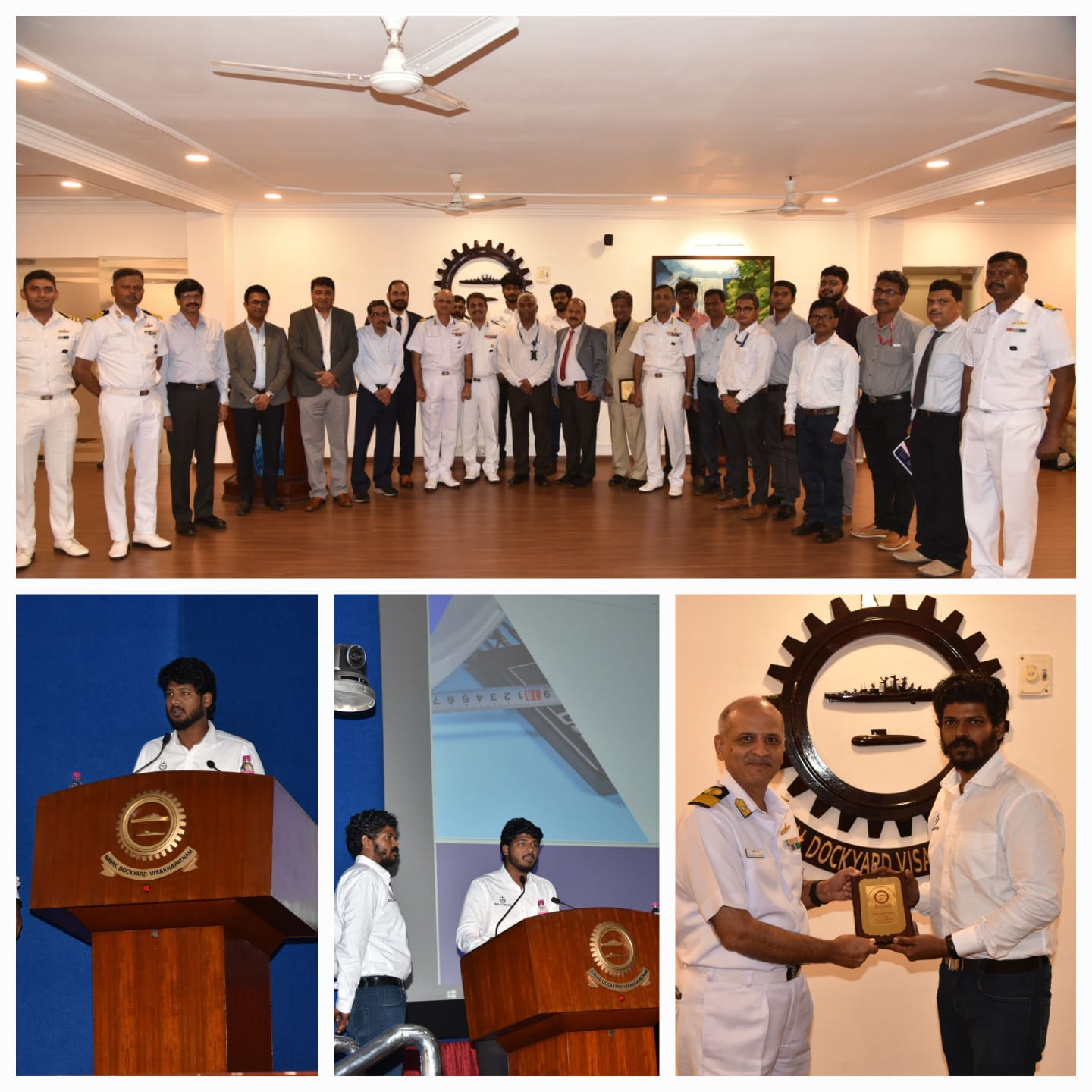
Our team of experts and enthusiasts has actively engaged in various seminars, workshops, and conferences that explore cutting-edge NDT techniques. Through these events, we have gained valuable insights into the latest technologies, tools, and methodologies that are transforming the NDT landscape.
These opportunities have not only expanded our knowledge but also strengthened our network within the NDT community. Collaborating with fellow practitioners and experts has been instrumental in driving positive change and elevating the industry’s standards.
Rest assured, your Mock-up Test will be in the hands of professionals who are passionate about delivering exceptional NDT services. We look forward to collaborating with you and contributing to the success of your projects.
For any inquiries or to schedule your Mock-up Test, please don’t hesitate to contact us. Our team is eager to assist you and provide the highest level of service.
Thank you for choosing us as your trusted NDT partner. We are committed to delivering outstanding results and exceeding your expectations.
For More Information Contact Our Expert Team: support@solutionss.org

